Septic health. Sepsis: Understanding Symptoms, Causes, and Treatment Options
What are the key signs of sepsis. How is sepsis diagnosed and treated. Who is at highest risk for developing sepsis. What complications can arise from severe sepsis.
What is Sepsis and Why is it So Dangerous?
Sepsis is a potentially life-threatening condition that occurs when the body’s response to an infection spirals out of control, damaging its own tissues and organs. It represents a medical emergency that requires immediate treatment.
Why exactly is sepsis so dangerous? The overactive immune response triggered by sepsis can lead to widespread inflammation throughout the body. This inflammatory cascade can rapidly progress to impaired blood flow to vital organs, abnormal blood clotting, tissue damage, organ failure, and even death if not addressed promptly.
The mortality rate for septic shock, the most severe form of sepsis, is approximately 40%. Even those who survive an episode of severe sepsis face an increased risk of future infections and long-term health complications.

Recognizing the Signs and Symptoms of Sepsis
Identifying sepsis early is critical for improving outcomes. The key signs and symptoms to watch for include:
- Change in mental status (confusion, disorientation)
- Rapid breathing (respiratory rate ≥ 22 breaths per minute)
- Low blood pressure (systolic pressure ≤ 100 mm Hg)
- Fever, chills, or feeling very cold
- Extreme pain or discomfort
- Clammy or sweaty skin
As sepsis progresses to septic shock, additional red flags may emerge:
- Need for medications to maintain blood pressure
- Elevated lactic acid levels in the blood
- Signs of organ dysfunction
If you suspect sepsis or notice an infection worsening, seek emergency medical care immediately. Prompt intervention can be life-saving.
Common Causes and Risk Factors for Sepsis
While any type of infection can potentially lead to sepsis, certain infections pose a higher risk:
- Pneumonia and other lung infections
- Urinary tract infections
- Abdominal infections
- Bloodstream infections (bacteremia)
- Infections at catheter sites
- Wound or burn infections
Several factors can increase an individual’s susceptibility to developing sepsis:

- Advanced age (65+) or very young age (infancy)
- Weakened immune system
- Chronic health conditions (diabetes, kidney disease, liver disease)
- Recent hospitalization or ICU admission
- Invasive medical devices (catheters, breathing tubes)
- Recent use of antibiotics or corticosteroids
Understanding these risk factors can help healthcare providers identify patients who may need closer monitoring for signs of sepsis.
Diagnosing Sepsis: A Race Against Time
Diagnosing sepsis quickly is crucial for initiating appropriate treatment. Healthcare providers use a combination of approaches:
- Medical history and symptom assessment
- Physical examination
- Blood tests (to check for signs of infection, organ dysfunction, and blood clotting abnormalities)
- Imaging studies (to locate the source of infection)
To be diagnosed with sepsis, a patient must have a confirmed or suspected infection along with specific signs of organ dysfunction. The Sepsis-3 criteria, established in 2016, use the quick SOFA (qSOFA) score to rapidly identify adults with suspected infection who are likely to have poor outcomes. The qSOFA score assesses three criteria:
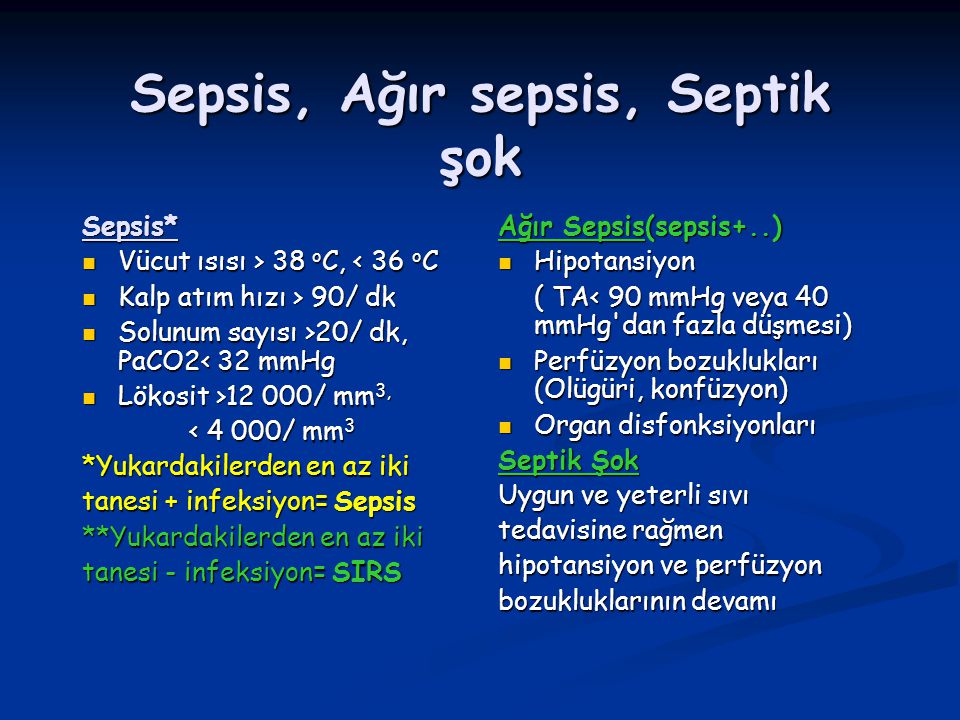
- Altered mental status
- Respiratory rate ≥ 22 breaths per minute
- Systolic blood pressure ≤ 100 mm Hg
The presence of at least two of these criteria in a patient with suspected infection should prompt clinicians to investigate further for organ dysfunction and initiate or escalate treatment as appropriate.
Treatment Approaches for Sepsis: Time is of the Essence
The management of sepsis focuses on addressing the underlying infection, supporting organ function, and preventing complications. Key components of sepsis treatment include:
1. Antimicrobial Therapy
Broad-spectrum antibiotics are typically administered intravenously within the first hour of sepsis recognition. As culture results become available, therapy may be tailored to target the specific pathogen.
2. Fluid Resuscitation
Intravenous fluids help maintain blood pressure and organ perfusion. The type and amount of fluid are carefully monitored to avoid fluid overload.
3. Vasopressors
If blood pressure remains low despite fluid therapy, medications called vasopressors may be used to constrict blood vessels and increase blood pressure.
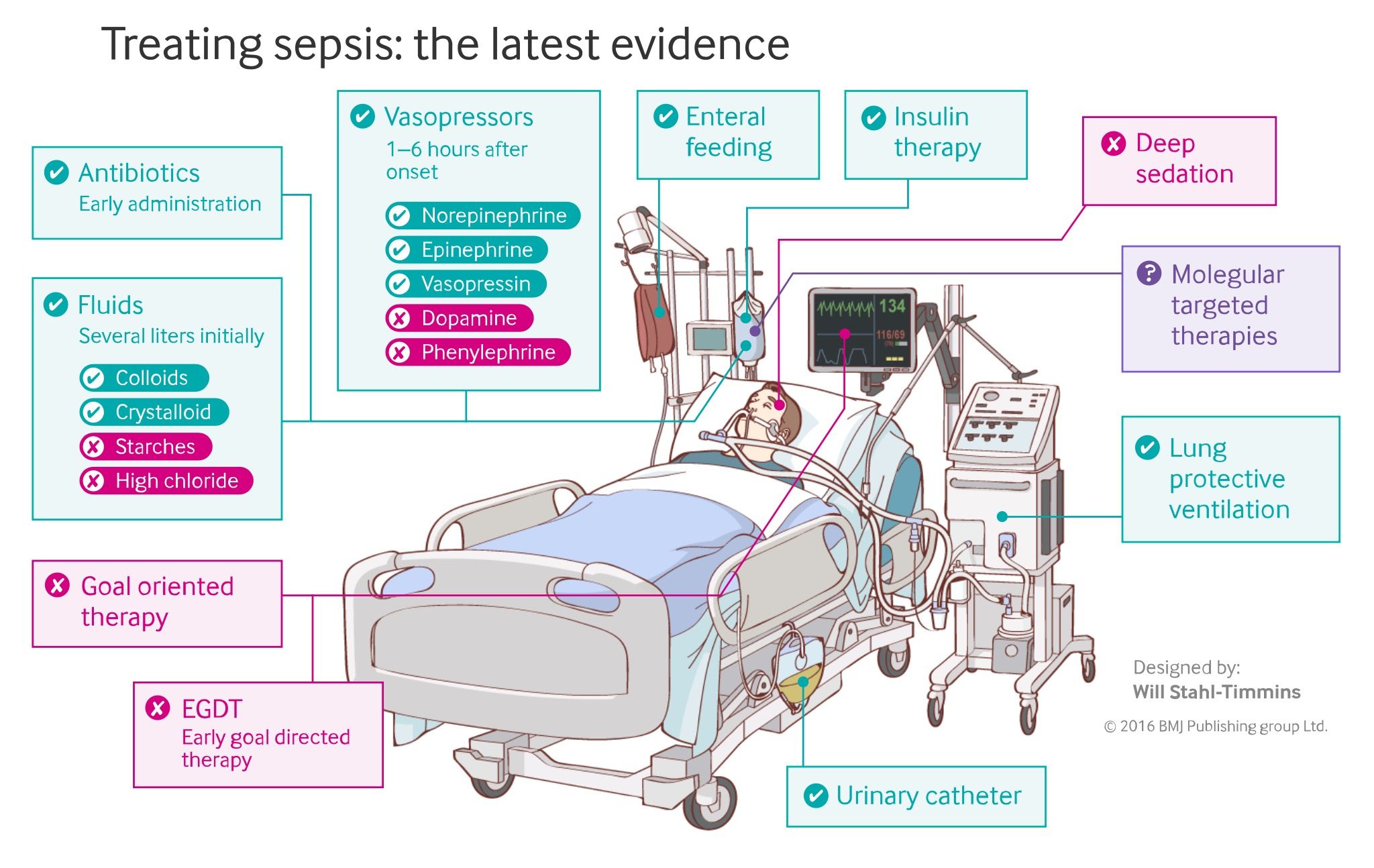
4. Supportive Care
This may include mechanical ventilation for respiratory support, dialysis for kidney failure, or other interventions to support failing organs.
5. Source Control
Identifying and addressing the source of infection (e.g., draining an abscess, removing an infected device) is crucial for successful treatment.
Early, aggressive treatment significantly improves the chances of survival for patients with sepsis. The Surviving Sepsis Campaign guidelines recommend a bundle of care measures to be initiated within the first hour of sepsis recognition, emphasizing the critical nature of timely intervention.
Preventing Sepsis: Strategies for Reducing Risk
While not all cases of sepsis can be prevented, several strategies can help reduce the risk:
- Practice good hygiene, including regular handwashing
- Keep wounds clean and protected
- Stay up-to-date on vaccinations
- Manage chronic health conditions effectively
- Seek prompt medical attention for infections
- Use antibiotics judiciously, as prescribed by a healthcare provider
For individuals at higher risk of sepsis, such as those with weakened immune systems or chronic illnesses, extra vigilance in monitoring for signs of infection is crucial.

Long-term Consequences of Sepsis: Life After Survival
Surviving sepsis is a significant victory, but the journey doesn’t end at hospital discharge. Many sepsis survivors face long-term physical, cognitive, and emotional challenges:
Physical Effects
- Persistent fatigue and weakness
- Muscle wasting and joint pain
- Increased susceptibility to infections
- Organ dysfunction (e.g., kidney problems, breathing difficulties)
Cognitive Impacts
- Memory issues
- Difficulty concentrating
- Slower processing speed
Emotional and Psychological Challenges
- Anxiety and depression
- Post-traumatic stress disorder (PTSD)
- Sleep disturbances
These lingering effects, collectively known as post-sepsis syndrome, can persist for months or even years after the initial sepsis event. Ongoing medical care, rehabilitation, and support are often necessary to address these challenges and improve quality of life for sepsis survivors.
Sepsis Research: Advancing Our Understanding and Treatment
The field of sepsis research is dynamic and rapidly evolving. Current areas of focus include:
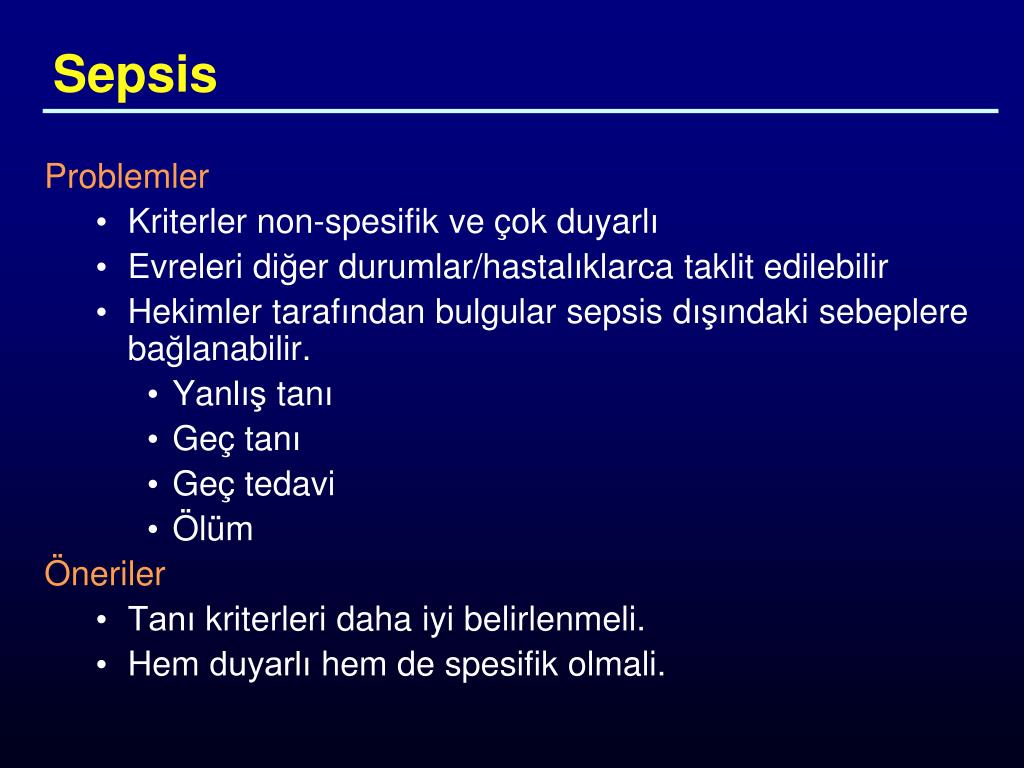
Biomarker Discovery
Researchers are working to identify reliable biomarkers that can help diagnose sepsis earlier and more accurately. This could lead to faster initiation of treatment and improved outcomes.
Immunomodulation Therapies
Understanding the complex immune response in sepsis has led to investigations of therapies that can modulate the immune system, potentially preventing the harmful overreaction that characterizes sepsis.
Personalized Medicine Approaches
Given the heterogeneity of sepsis, tailoring treatments to individual patient characteristics and the specific pathogen involved may improve efficacy.
Machine Learning and Artificial Intelligence
Advanced algorithms are being developed to analyze large datasets and predict sepsis onset, potentially allowing for earlier intervention.
These research efforts hold promise for improving sepsis diagnosis, treatment, and outcomes in the future. As our understanding of sepsis pathophysiology deepens, new therapeutic targets and strategies continue to emerge.

Global Impact of Sepsis: A Public Health Priority
Sepsis represents a significant global health burden, affecting millions of people worldwide each year. The World Health Organization (WHO) has recognized sepsis as a global health priority, highlighting the need for improved prevention, recognition, and management strategies.
Key facts about the global impact of sepsis include:
- Sepsis affects an estimated 49 million people annually worldwide
- It is responsible for approximately 11 million deaths each year
- Sepsis is a leading cause of death in hospitals
- Low- and middle-income countries are disproportionately affected
- Children, particularly neonates, are at high risk in resource-limited settings
Addressing the global sepsis burden requires multifaceted approaches, including:
- Improving access to clean water, sanitation, and healthcare
- Enhancing infection prevention and control measures
- Strengthening health systems and emergency care capabilities
- Increasing public awareness of sepsis signs and symptoms
- Promoting antimicrobial stewardship to combat antibiotic resistance
By prioritizing sepsis awareness, prevention, and treatment on a global scale, countless lives can be saved and the devastating impact of this condition can be reduced.

In conclusion, sepsis remains a critical health challenge that demands ongoing attention from healthcare providers, researchers, and policymakers. Through continued research, improved clinical practices, and heightened public awareness, we can work towards a future where sepsis is more readily prevented, quickly recognized, and effectively treated, ultimately saving lives and reducing the long-term burden of this devastating condition.
Sepsis – Symptoms and causes
Overview
Sepsis is a potentially life-threatening condition that occurs when the body’s response to an infection damages its own tissues. When the infection-fighting processes turn on the body, they cause organs to function poorly and abnormally.
Sepsis may progress to septic shock. This is a dramatic drop in blood pressure that can lead to severe organ problems and death.
Early treatment with antibiotics and intravenous fluids improves chances for survival.
Products & Services
Show more products from Mayo Clinic
Symptoms
Signs and symptoms of sepsis
To be diagnosed with sepsis, you must have a probable or confirmed infection and all of the following signs:
- Change in mental status
- Systolic blood pressure — the first number in a blood pressure reading — less than or equal to 100 millimeters of mercury (mm Hg)
- Respiratory rate higher than or equal to 22 breaths a minute
Signs and symptoms of septic shock
Septic shock is a severe drop in blood pressure that results in highly abnormal problems with how cells work and produce energy. Progression to septic shock increases the risk of death. Signs of progression to septic shock include:
Progression to septic shock increases the risk of death. Signs of progression to septic shock include:
- The need for medication to maintain systolic blood pressure greater than or equal to 65 mm Hg.
- High levels of lactic acid in your blood (serum lactate). Having too much lactic acid in your blood means that your cells aren’t using oxygen properly.
When to see a doctor
Most often, sepsis occurs in people who are hospitalized or who have recently been hospitalized. People in an intensive care unit are more likely to develop infections that can then lead to sepsis.
Any infection, however, could lead to sepsis. See your doctor about an infection or wound that hasn’t responded to treatment. Signs or symptoms, such as confusion or rapid breathing, require emergency care.
Causes
While any type of infection — bacterial, viral or fungal — can lead to sepsis, infections that more commonly result in sepsis include infections of:
- Lungs, such as pneumonia
- Kidney, bladder and other parts of the urinary system
- Digestive system
- Bloodstream (bacteremia)
- Catheter sites
- Wounds or burns
Risk factors
Several factors increase the risk of sepsis, including:
- Older age
- Infancy
- Compromised immune system
- Diabetes
- Chronic kidney or liver disease
- Admission to intensive care unit or longer hospital stays
- Invasive devices, such as intravenous catheters or breathing tubes
- Previous use of antibiotics or corticosteroids
Complications
As sepsis worsens, blood flow to vital organs, such as your brain, heart and kidneys, becomes impaired. Sepsis may cause abnormal blood clotting that results in small clots or burst blood vessels that damage or destroy tissues.
Sepsis may cause abnormal blood clotting that results in small clots or burst blood vessels that damage or destroy tissues.
Most people recover from mild sepsis, but the mortality rate for septic shock is about 40%. Also, an episode of severe sepsis places you at higher risk of future infections.
Jan. 19, 2021
Sepsis: MedlinePlus
What is sepsis?
Sepsis is your body’s overactive and extreme response to an infection. Sepsis is a life-threatening medical emergency. Without quick treatment, it can lead to tissue damage, organ failure, and even death.
What causes sepsis?
Sepsis happens when an infection you already have triggers a chain reaction throughout your body. Bacterial infections are the most common cause, but other types of infections can also cause it.
The infections are often in the lungs, stomach, kidneys, or bladder. It’s possible for sepsis to begin with a small cut that gets infected or with an infection that develops after surgery. Sometimes, sepsis can occur in people who didn’t even know that they had an infection.
It’s possible for sepsis to begin with a small cut that gets infected or with an infection that develops after surgery. Sometimes, sepsis can occur in people who didn’t even know that they had an infection.
Who is at risk for sepsis?
Anyone with an infection could get sepsis. But certain people are at higher risk:
What are the symptoms of sepsis?
Sepsis can cause one or more of these symptoms:
- Rapid breathing and heart rate
- Shortness of breath
- Confusion or disorientation
- Extreme pain or discomfort
- Fever, shivering, or feeling very cold
- Clammy or sweaty skin
It’s important to get medical care right away if you think you might have sepsis or if your infection is not getting better or is getting worse.
What other problems can sepsis cause?
Severe cases of sepsis can lead to septic shock, where your blood pressure drops to a dangerous level and multiple organs can fail.
How is sepsis diagnosed?
To make a diagnosis, your health care provider
- Will ask about your medical history and symptoms
- Will do a physical exam, including checking vital signs (your temperature, blood pressure, heart rate, and breathing)
- Will likely do lab tests that check for signs of infection or organ damage
- May need to do imaging tests such as an x-ray or a CT scan to find the location of the infection
Many of the signs and symptoms of sepsis can also be caused by other medical conditions. This may make sepsis hard to diagnose in its early stages.
What are the treatments for sepsis?
It is very important to get treatment right away. Treatment usually includes
- Antibiotics
- Maintaining blood flow to organs. This may involve getting oxygen and intravenous (IV) fluids.
- Treating the source of the infection
- If needed, medicines to increase blood pressure
In serious cases, you might need kidney dialysis or a breathing tube. Some people need surgery to remove tissue damaged by the infection.
Some people need surgery to remove tissue damaged by the infection.
Can sepsis be prevented?
To prevent sepsis, you should try to prevent getting an infection:
- Take good care of any chronic health conditions that you have
- Get recommended vaccines
- Practice good hygiene, such as handwashing
- Keep cuts clean and covered until healed
NIH: National Institute of General Medical SciencesCenters for Disease Control and Prevention
Causes, Symptoms, Treatment & Prevention
Overview
What is sepsis?
Sepsis is a medical emergency caused by the body’s response to an infection and can be life-threatening. Sepsis is the consequence of widespread inflammation (swelling) in the body. Inflammation and blood clotting during sepsis causes reduced blood flow to limbs and vital organs, and can lead to organ failure and even death. Over 1.5 million people in the United States are diagnosed with sepsis yearly, and approximately 30% of patients do not survive.
Over 1.5 million people in the United States are diagnosed with sepsis yearly, and approximately 30% of patients do not survive.
Who is at risk for sepsis?
Sepsis can affect anyone, but those at particular risk include:
- The very old (older than 65 years old) or very young or pregnant women
- People with pre-existing infections or medical conditions such as diabetes, lung disease, cancer and kidney disease
- People with weakened immune systems
- Patients who are in the hospital
- People with severe injuries, such as large burns or wounds
- Patients with catheters (IVs, urinary catheters) or a breathing tube
Symptoms and Causes
What causes sepsis?
Bacterial infections are the most common cause of sepsis. Sepsis can also be caused by fungal, parasitic, or viral infections. The source of the infection can be any of a number of places throughout the body. Common sites and types of infection that can lead to sepsis include:
Sepsis can also be caused by fungal, parasitic, or viral infections. The source of the infection can be any of a number of places throughout the body. Common sites and types of infection that can lead to sepsis include:
- The abdomen: An infection of the appendix (appendicitis), bowel problems, infection of the abdominal cavity (peritonitis), and gallbladder or liver infections.
- The central nervous system: Infections of the brain or the spinal cord.
- The lungs: Infections such as pneumonia.
- The skin: Bacteria can enter skin through wounds or skin inflammation, or through the openings made with intravenous (IV) catheters (tubes inserted into the body to give or drain fluids). Conditions such as cellulitis (inflammation of the skin’s connective tissue) can also cause sepsis.
- The urinary tract (kidneys or bladder): Urinary tract infections are especially likely if the patient has a urinary catheter to drain urine.

What are the symptoms of sepsis?
Because of the many sites on the body from which sepsis can originate, there are a number of symptoms. The most prominent are:
- Fast heart rate
- Fever or hypothermia (very low body temperature)
- Shaking or chills
- Warm or clammy/sweaty skin
- Confusion or disorientation
- Hyperventilation (rapid breathing) or shortness of breath
Diagnosis and Tests
How is sepsis diagnosed?
A person may have sepsis if he or she has:
- A high or low white blood cell count
- A low platelet count
- Acidosis (too much acid in the blood)
- A blood culture that is positive for infection
- Abnormal kidney or liver function
Management and Treatment
How is sepsis treated?
The most important concern in sepsis is quick diagnosis and prompt treatment. Patients diagnosed with severe sepsis are usually placed in the intensive care unit (ICU) of the hospital for special treatment. The doctor will first try to identify the source and the type of infection, obtain blood and urine tests and X-rays or CT scans, and give the patient antibiotics to treat the infection. (Note: Antibiotics are ineffective against infections caused by viruses.)
Patients diagnosed with severe sepsis are usually placed in the intensive care unit (ICU) of the hospital for special treatment. The doctor will first try to identify the source and the type of infection, obtain blood and urine tests and X-rays or CT scans, and give the patient antibiotics to treat the infection. (Note: Antibiotics are ineffective against infections caused by viruses.)
IV (intravenous or in the vein) fluids are administered to prevent blood pressure from dropping too low. In some cases, the patient may need vasopressor medications (which tighten blood vessels) to reach an adequate blood pressure. And finally, if organ failures occur, the patient will receive the appropriate supportive care (for example, dialysis for kidney failure, mechanical ventilation for respiratory failure, etc.).
Prevention
How can I help prevent sepsis?
- Apply good hand-washing practices
- Keep up to date on recommended vaccines
- Get routine medical care for chronic conditions
- Get medical attention immediately if you suspect an infection
Resources
Are there resources for people with sepsis?
You might find the following information to be useful if you are interested in finding sepsis resources:
Sepsis
Background
Sepsis is a life-threatening organ dysfunction caused by a dysregulated host response to infection (3). If not recognized early and managed promptly, it can lead to septic shock, multiple organ failure and death. It is most frequently a serious complication of infection, particularly in low- and middle-income countries where it represents a major cause of maternal and neonatal morbidity and mortality.
If not recognized early and managed promptly, it can lead to septic shock, multiple organ failure and death. It is most frequently a serious complication of infection, particularly in low- and middle-income countries where it represents a major cause of maternal and neonatal morbidity and mortality.
In the community setting, sepsis often presents as the clinical deterioration of common and preventable infections. Sepsis also frequently results from infections acquired in health care settings, which are one of the most frequent adverse events during care delivery and affect hundreds of millions of patients worldwide every year (2).
Healthcare-associated infections are often resistant to antibiotics and can rapidly lead to deteriorating clinical conditions. Antimicrobial resistance is a major factor determining clinical unresponsiveness to treatment and rapid evolution to sepsis and septic shock. Sepsis patients with resistant pathogens have been found to have a higher risk of hospital mortality.
Implementing preventive measures against infections, such as good hygiene practices, ensuring access to vaccination programmes, improved sanitation and water quality and availability, and other infection prevention and control best practices both in the community and health care settings, are key steps in reducing the occurrence of sepsis. Early diagnosis and timely and appropriate clinical management of sepsis, such as optimal antimicrobial use and fluid resuscitation, are crucial to increase the likelihood of survival. Even though the onset of sepsis can be acute and poses a short-term mortality burden, it can also be the cause of significant long-term morbidity requiring treatment and support. Thus, sepsis requires a multidisciplinary approach.
Who is at risk?
Anyone affected by an infection, severe injury, or serious non-communicable disease can progress to sepsis but vulnerable populations are at higher risk (4) including:
- older persons,
- pregnant or recently pregnant women,
- neonates,
- hospitalized patients,
- patients in intensive care units,
- people with HIV/AIDS,
- people with liver cirrhosis,
- people with cancer,
- people with kidney disease,
- people with autoimmune diseases,
- and people with no spleen.

Signs and symptoms
Sepsis is a medical emergency and can present with various signs and symptoms at different times. Warning signs and symptoms include:
- fever or low temperature and shivering,
- altered mental status,
- difficulty breathing/rapid breathing,
- increased heart rate,
- weak pulse/low blood pressure,
- low urine output,
- cyanotic or mottled skin,
- cold extremities,
- and extreme body pain or discomfort (5-7).
Suspecting sepsis is a first major step towards early recognition and diagnosis.
Common Causes
In 2017, the largest contributors to sepsis cases and sepsis-related mortality across all ages were diarrhoeal diseases (9.2 to 15 million annual cases) and lower respiratory infections (1.8-2.8 million annually) (1). However, non-communicable diseases are on the rise; one-third of sepsis cases and nearly half of all sepsis-related deaths in 2017 were due to an underlying injury or chronic disease (1). Maternal disorders were the most common non-communicable disease complicated by sepsis. Among children, the most common causes of sepsis-related deaths were neonatal disorders, lower respiratory infections, and diarrhoeal diseases (1). Group B streptococcus is the leading cause of both neonatal and maternal sepsis, though Escherichia coli is an emerging threat (8,9). Both of these pathogens have displayed considerable resistance to treatment and are considered priority pathogens for research and development (R&D) of new antibiotics.
Maternal disorders were the most common non-communicable disease complicated by sepsis. Among children, the most common causes of sepsis-related deaths were neonatal disorders, lower respiratory infections, and diarrhoeal diseases (1). Group B streptococcus is the leading cause of both neonatal and maternal sepsis, though Escherichia coli is an emerging threat (8,9). Both of these pathogens have displayed considerable resistance to treatment and are considered priority pathogens for research and development (R&D) of new antibiotics.
Sepsis Prevention
There are two main steps to preventing sepsis:
- Prevention of microbial transmission and infection
- Prevention of an infection evolving into sepsis
Prevention of infection in the community involves using effective hygiene practices, such as hand washing, and safe preparation of food, improving sanitation and water quality and availability, providing access to vaccines, particularly for those at high risk, as well as appropriate nutrition, including breastfeeding for newborns.
Prevention of infection in health care facilities mainly relies on having functioning infection prevention and control (IPC) programmes and teams, effective hygiene practices and precautions, including hand hygiene, along with a clean, well-functioning environment and equipment.
Prevention of the evolution to sepsis in both community and health care facilities requires the appropriate antibiotic treatment of infection, including reassessment for optimization, prompt seeking of medical care, and early detection of sepsis signs and symptoms.
Diagnosis and Clinical Management
Identifying and not underestimating the signs and symptoms listed above, along with the detection of some biomarkers (such as C reactive protein and procalcitonin), are crucial elements for early diagnosis of sepsis and the timely establishment of its appropriate clinical management. After early recognition, diagnostics to help identify a causal pathogen of infection leading to sepsis are important to guide targeted antimicrobial treatment. Once the source of infection is determined, source control, such as drainage of an abscess, is critical. Antimicrobial resistance (AMR) can jeopardize clinical management of sepsis because empirical antibiotic treatment is often required. Early fluid resuscitation to improve volume status is also important in the initial phase of sepsis management. In addition, vasopressors may be required to improve and maintain tissue perfusion. Repeated exams and assessments, including monitoring vital signs, guide the appropriate management of sepsis over time.
Once the source of infection is determined, source control, such as drainage of an abscess, is critical. Antimicrobial resistance (AMR) can jeopardize clinical management of sepsis because empirical antibiotic treatment is often required. Early fluid resuscitation to improve volume status is also important in the initial phase of sepsis management. In addition, vasopressors may be required to improve and maintain tissue perfusion. Repeated exams and assessments, including monitoring vital signs, guide the appropriate management of sepsis over time.
Sepsis is a significant cause of maternal, neonatal and child mortality. Consequently, combating sepsis will contribute to achievement of Sustainable Development Goals (SDGs) targets 3.8 on quality of care, and 3.1 and 3.2 by improving mortality rates in these vulnerable populations. Sepsis can also ultimately lead to death in patients affected by HIV, tuberculosis, malaria, and other infectious diseases that are included in target 3.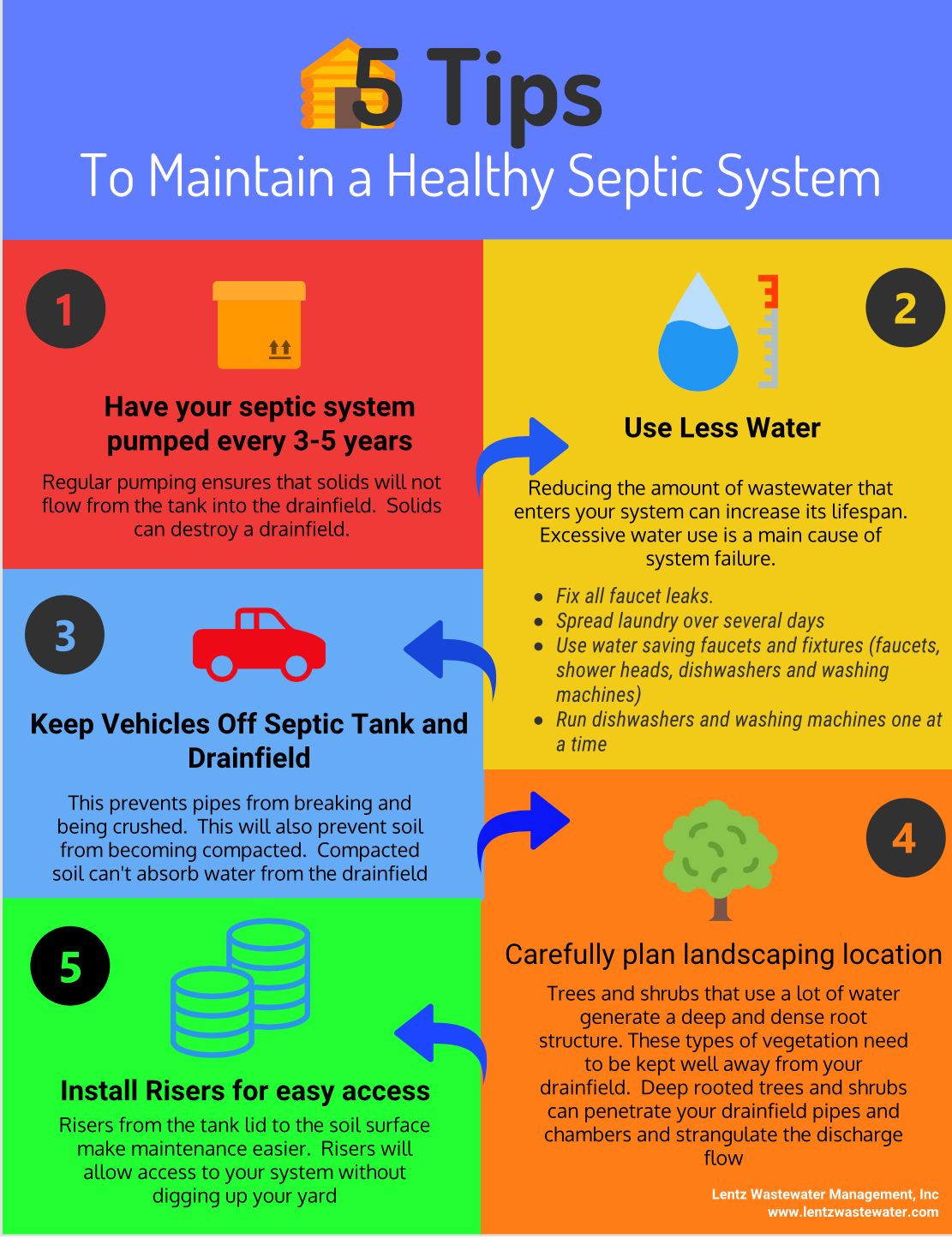 3. The prevention and/or appropriate diagnosis and management of sepsis is also linked to adequate vaccine coverage, quality universal health coverage, capacity to comply with the International Health Regulations, preparedness, and water and sanitation services. The challenge, however, remains how to achieve universal prevention, diagnosis and management of sepsis.
3. The prevention and/or appropriate diagnosis and management of sepsis is also linked to adequate vaccine coverage, quality universal health coverage, capacity to comply with the International Health Regulations, preparedness, and water and sanitation services. The challenge, however, remains how to achieve universal prevention, diagnosis and management of sepsis.
WHO Sepsis Response
To combat this important global health threat, WHO responded with a WHO Secretariat Report and, in May 2017, the Seventieth World Health Assembly adopted Resolution WHA70.7 on Improving the prevention, diagnosis and clinical management of sepsis. The key pillars of Resolution WHA 70.7 are to:
- Develop WHO guidance on sepsis prevention and management
- Draw attention to public health impacts of sepsis and estimate the global burden of sepsis
- Support Member States to define and implement standards and establish guidelines, infrastructure, laboratory capacity, strategies, and tools for identifying, reducing incidence of, and morbidity and mortality due to sepsis
- Collaborate with UN organizations, partners, international organizations, and stakeholders to enhance sepsis treatment and infection prevention and control including vaccinations
In collaboration and coordination with WHO regional offices, Member States and other stakeholders, several WHO headquarters programmes are currently working on the public health impact of sepsis and providing guidance and country support on sepsis prevention, early and appropriate diagnosis, and timely and appropriate clinical management.
References
(1) Rudd KE, Johnson SC, Agesa KM, Shackelford KA, Tsoi D, Kievlan DR, et al. Global, regional, and national sepsis incidence and mortality, 1990-2017: analysis for the Global Burden of Disease Study. Lancet (London, England). 2020;395(10219):200-11.
(2) World Health Organization. WHO Report on the burden of endemic health care-associated infection worldwide. 2017-11-21 15:11:22 2011.
(3) Singer M, Deutschman CS, Seymour CW, et al. The Third International Consensus Definitions for Sepsis and Septic Shock (Sepsis-3). JAMA 2016; 315(8): 801-10.
(4) Gotts JE, Matthay MA. Sepsis: pathophysiology and clinical management. British Medical Journal 2016.
(5) United States Centers for Disease Control and Prevention. Healthcare Professional (HCP) Resources : Sepsis. Updated August 27, 2019. T06:23:15Z. https://www.cdc.gov/sepsis/get-ahead-of-sepsis/hcp-resources.html (accessed February 25 2020).
(6) Global Sepsis Alliance. Toolkits. https://www.world-sepsis-day.org/toolkits/ (accessed February 25 2020).
Toolkits. https://www.world-sepsis-day.org/toolkits/ (accessed February 25 2020).
(7) UK Sepsis Trust. Education. 2018. https://sepsistrust.org/education/ (accessed February 25 2020).
(8) Lawn JE, Bianchi-Jassir F, Russell NJ, Kohli-Lynch M, Tann CJ, Hall J, et al. Group B Streptococcal Disease Worldwide for Pregnant Women, Stillbirths, and Children: Why, What, and How to Undertake Estimates? Clin Infect Dis. 2017;65(suppl_2):S89-S99.
(9) Stoll BJ, Hansen NI, Sanchez PJ, Faix RG, Poindexter BB, Van Meurs KP, et al. Early onset neonatal sepsis: the burden of group B Streptococcal and E. coli disease continues. Pediatrics. 2011;127(5):817-26.
Surviving Sepsis | NIH News in Health
August 2014
Print this issue
Taming a Deadly Immune Response
Many people have never heard of sepsis, or they don’t know what it is.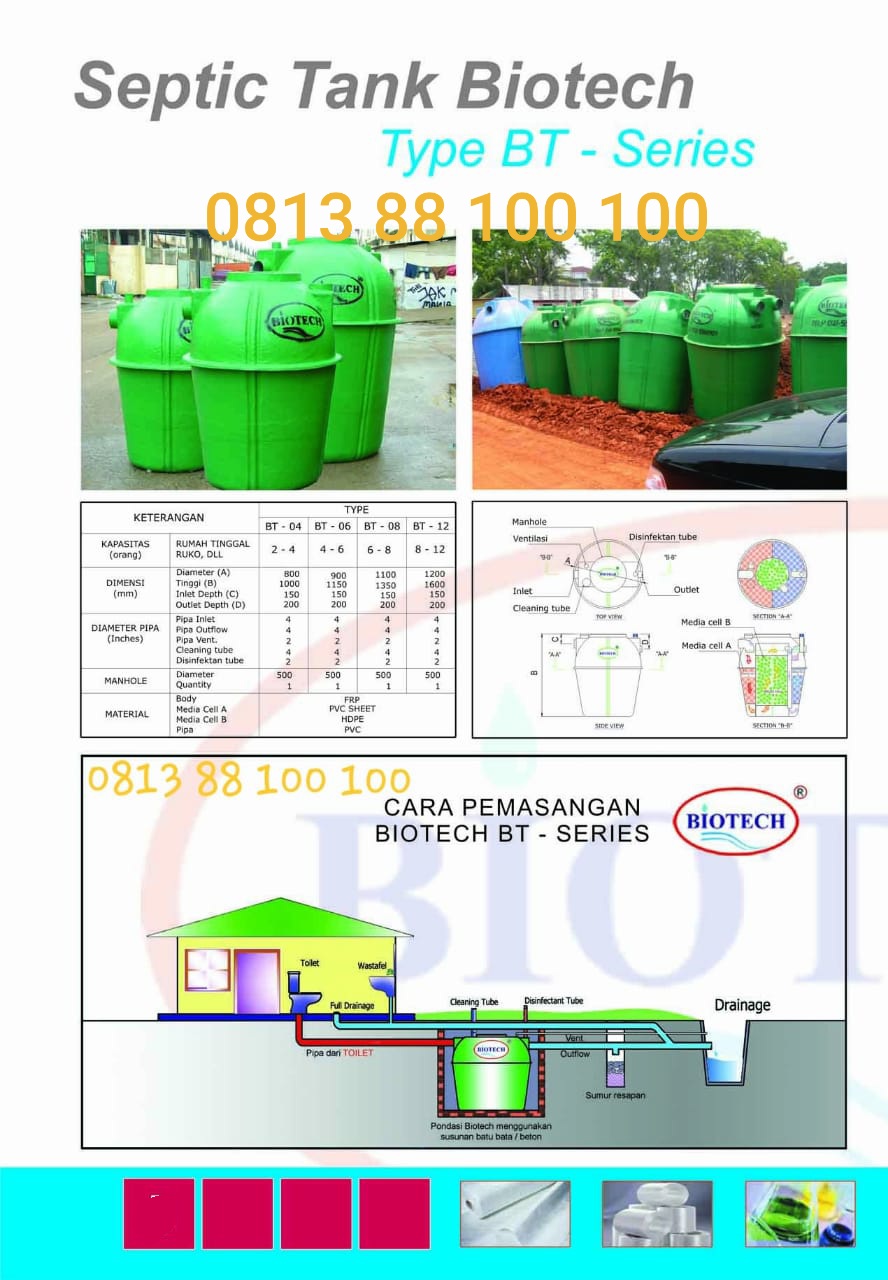 But sepsis is one of the top 10 causes of disease-related death in the United States. The condition can arise suddenly and progress quickly, and it’s often hard to recognize.
But sepsis is one of the top 10 causes of disease-related death in the United States. The condition can arise suddenly and progress quickly, and it’s often hard to recognize.
Sepsis was once commonly known as “blood poisoning.” It was almost always deadly. Today, even with early treatment, sepsis kills about 1 in 5 affected people. It causes symptoms such as fever, chills, rapid breathing, and confusion.
Anyone can get sepsis, but the elderly, children, and infants are most vulnerable. People with weakened immune systems, severe burns, physical trauma, or long-term illnesses (such as diabetes, cancer, or liver disease) are also at increased risk.
At one time, sepsis was thought to arise from an overgrowth of bacteria or other germs in the bloodstream. We now know that sepsis actually springs from 2 factors: first an infection (such as pneumoniaAn infection of the lungs. or a urinary tract infection) and then a powerful and harmful response by your body’s own immune systemThe system that protects your body from invading bacteria, viruses, and other microscopic threats. .
.
“With sepsis, the fight between the infection and the body’s immune response makes the body like a battleground,” says Dr. Derek Angus, a critical care physician at the University of Pittsburgh School of Medicine. “In the case of severe sepsis, that fight results in vital organ dysfunction, which puts one’s life in peril.”
Severe sepsis can damage essential organs like the liver and kidneys. An even more extreme disorder occurs when blood pressure plummets—a condition known as septic shock. “With septic shock, the immune response that’s trying to fight infection can actually lead to a dangerous drop in blood pressure,” Angus says. As blood pressure falls, tissues become starved for oxygen-rich blood. Organs can fail, which could lead to death.
By some estimates, severe sepsis or septic shock strikes nearly 1 million Americans each year. At least 200,000 of them die in the hospital shortly afterward. Many who survive recover completely. But others have lasting problems, including permanent organ damage and thinking difficulties (such as problems with planning, organizing, and multitasking).
Sepsis can be triggered by many types of infections. “But the most common cause of sepsis is community–acquired pneumonia,” Angus says. Scientists are still working to understand why some people with infections develop severe sepsis or septic shock while others don’t.
Researchers are exploring new ways to diagnose, reverse, or prevent this serious and costly condition. Treatment for sepsis is most successful if the condition is spotted early and then treated quickly with antibiotics to fight the infection and fluids to maintain blood pressure.
In a large NIH-funded clinical trial of sepsis care, Angus and his colleagues found that a relatively simple strategy worked as well at preventing deaths as did more complex and costly approaches. “The study helped to clarify that a lot of the treatment steps we’d been using are essential, but the extra steps with sophisticated and invasive procedures aren’t always necessary to improve survival,” Angus says.
Sepsis is a health emergency that requires swift medical care. See a doctor or get emergency assistance if you feel unwell and have a combination of the symptoms listed in the “Wise Choices” box.
See a doctor or get emergency assistance if you feel unwell and have a combination of the symptoms listed in the “Wise Choices” box.
Sepsis
Sepsis Overview
Sepsis is a life-threatening condition that requires early detection and timely, appropriate interventions to improve the chances of survival for patients of all ages. Sepsis is defined as a clinical syndrome in which patients have an infection that is accompanied by an extreme systemic response. Sepsis of sufficient severity that the function of major organ systems in the body (such as heart, kidney, brain and others) is impaired is referred to as ‘severe sepsis’. Patients with severe sepsis that have continued organ system impairment and/or low blood pressure that does not respond to treatment with adequate fluid replacement are considered to be in ‘septic shock’.
Severe sepsis and septic shock impact approximately 50,000 patients in NY each year, and on average almost 30% of patients died from this syndrome prior to the implementation of the New York State Sepsis Care Improvement Initiative.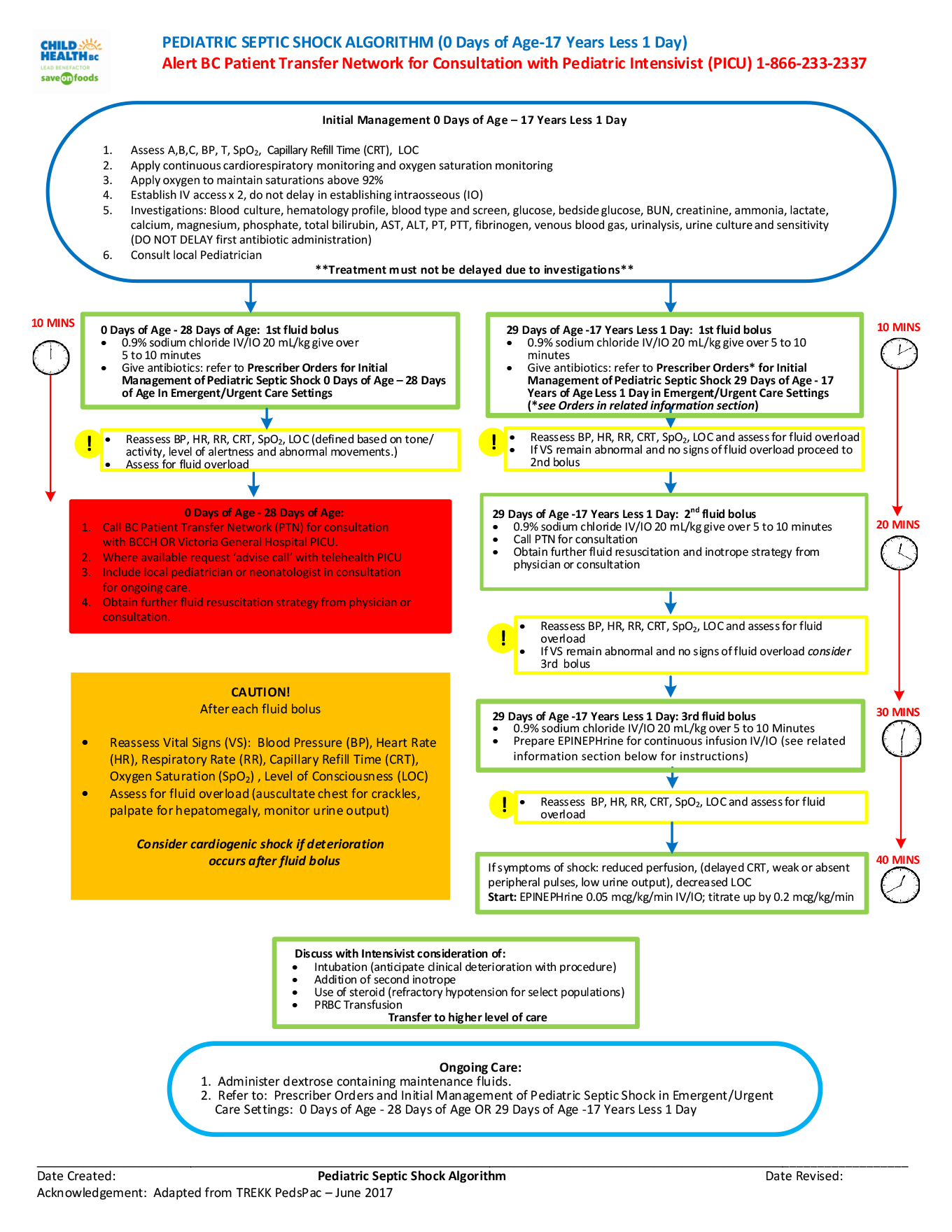 In addition, many more may experience lifelong impairments because of the broad impact that sepsis may have on organ and tissue function.
In addition, many more may experience lifelong impairments because of the broad impact that sepsis may have on organ and tissue function.
The combination of early detection of sepsis coupled with timely, appropriate interventions can significantly improve the chances of survival for patients with all types of sepsis. Since 2014, the New York State Sepsis Care Improvement Initiative has been a resource for quality improvement in sepsis care. For more on the New York State Sepsis Care Improvement Initiative, see the Reports section
Regulations
NYS Sepsis Data Collection
Beginning in 2014, each acute care hospital in New York that provides care to patients with sepsis was required by amendment of Title 10 of the New York State Codes, Rules and Regulations (Sections 405.2 and 405.4) to develop and implement evidence-informed sepsis protocols, which describe their approach to both early recognition and treatment of sepsis patients. In addition, hospitals were required to report data to the Department beginning in 2014 that are used to calculate each hospital’s performance on key measures of early treatment and protocol use.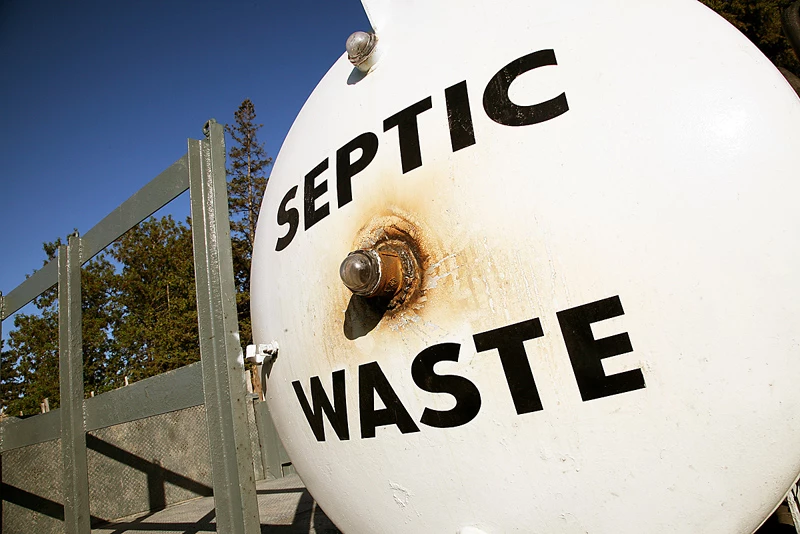
To help ensure that reported data, which will ultimately be used for public reporting of hospital performance, is both accurate and complete, the Department of Health has partnered with IPRO to use a variety of methods to authenticate the integrity of the data and the reports. More information on the means of data collection and validation can be found on the IPRO webpage for NYS Sepsis Data Collection.
Sepsis Advisory groups
Reports
Data Requests
Septic Systems | Tacoma-Pierce County Health Department
Septic Systems | Tacoma-Pierce County Health Department
Please enable JavaScript in your browser for a better user experience.
Healthy Homes
We are experiencing permitting delays.
 Click on permitting updates for more information.
Click on permitting updates for more information.
We help you keep it clean.
Healthy septic systems are good for your family, your wallet and the environment. With just a few simple steps, you can protect your septic—and avoid costly repairs. Your groundwater and Puget Sound lakes, rivers, and beaches benefit, too!
What is a septic system?
Think of them like a sewage treatment plant, only much smaller. They store, treat and dispose of the things you flush or send down drains. There are many different types of systems. Some are simple, using only a tank and a drainfield. Others are more complex, requiring pumps, filters, or specially designed materials.
To learn more, check out our 3D septic system models.
A maintained septic system keeps you and the environment healthy and helps:
- Reduce the risk of people getting sick from untreated sewage.

- Reduce the risk of contaminating groundwater and surface water.
- Save you money and extend the life of your system.
Our role is to:
- Work with septic system professionals to approve system design, location and installation.
- Educate property owners to make sure their septic system gets proper maintenance.
What are the regulations?
Resources
Have questions? We have answers!
Contact us at [email protected] or (253) 649-1925.
Sepsis
General information
Sepsis is a life-threatening dysfunction of internal organs caused by dysregulation of the body’s response to infection (7). If sepsis is not recognized early and treated promptly, it can cause septic shock, multiple organ failure, and death. Sepsis can be caused by any type of infectious pathogen.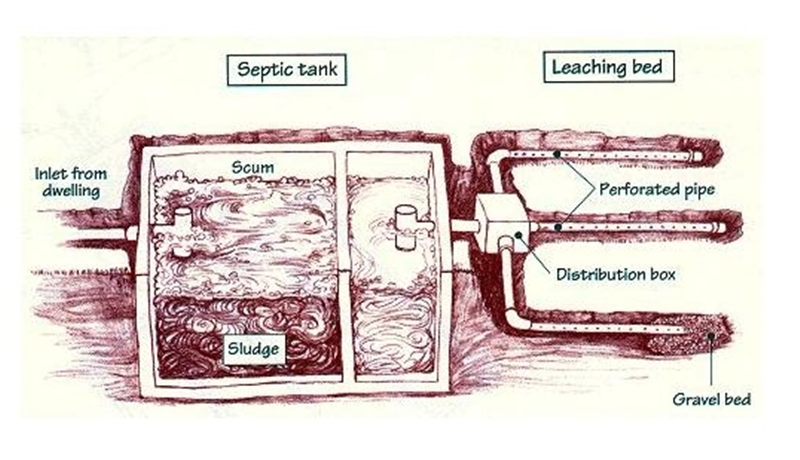 Antimicrobial resistance is the leading factor in the lack of clinical response to treatment and the rapid development of sepsis and septic shock.Patients with sepsis due to drug-resistant pathogens have an increased risk of hospital mortality.
Antimicrobial resistance is the leading factor in the lack of clinical response to treatment and the rapid development of sepsis and septic shock.Patients with sepsis due to drug-resistant pathogens have an increased risk of hospital mortality.
Who is at risk?
Anyone with an infection can develop sepsis, but vulnerable populations such as the elderly, pregnant women, newborns, hospitalized patients and people with HIV / AIDS, cirrhosis of the liver, cancer, kidney disease, autoimmune diseases and a removed spleen are at increased risk (eight).
Signs and symptoms
Sepsis is a medical emergency. However, the signs and symptoms of sepsis in patients can be different at different points in time, since a clinical condition such as sepsis can be caused by many pathogens and change its character at different stages. Alarming signs and symptoms include fever and chills, changes in mental status, shortness / rapid breathing, heart palpitations, weakened heart rate / low blood pressure, oliguria, cyanosis or marbling of the skin, cold extremities, and severe pain or discomfort in the body ( 9-11). The emergence of a suspicion of sepsis is the first step towards early recognition and diagnosis.
The emergence of a suspicion of sepsis is the first step towards early recognition and diagnosis.
Prevention
There are two main ways to prevent sepsis:
1. Prevention of transmission of microorganisms and infection;
2. Prevention of complications of infection to the state of sepsis.
Infection prevention in the community involves good hygiene practices such as handwashing and safe food preparation, improving the quality and availability of water and sanitation, ensuring access to vaccines, especially for those at high risk of sepsis, and proper nutrition including breastfeeding of newborns.
Prevention of nosocomial infections is generally ensured by functioning infection prevention and control programs and appropriate personnel groups, effective hygiene practices, including hand hygiene, as well as clean rooms and proper equipment operation.
Prevention of sepsis in both the general public and in health care settings involves appropriate treatment of infections with antibiotics, including regular assessment of patients for the rational use of antibiotics, prompt medical attention, and early detection of signs and symptoms of sepsis.
The effectiveness of infection prevention is clearly supported by scientific evidence. For example, with strict adherence to hand hygiene practices in health care settings, the reduction in the number of infections can be up to 50% (12), and in public places, these measures can reduce the risk of diarrhea by at least 40% (13). Measures to improve water supply, sanitation and hygiene (WASH) have the potential to reduce the overall burden of disease worldwide by 10% 90,031 14 90,032. Each year, vaccinations help prevent 2–3 million infection-related deaths (15).
Diagnostics and clinical management
In order to detect sepsis in the early stages and organize its proper clinical management in a timely manner, it is extremely important to recognize and not ignore the signs and symptoms listed above, as well as to identify certain biomarkers (in particular procalcitonin). In the post-early stage, diagnostic procedures are important to help identify the causative agent of the sepsis-causing infection, as this determines the choice of targeted antimicrobial treatment. Antimicrobial resistance (AMR) can impede the clinical management of sepsis, as it often requires empirical antibiotic selection. Therefore, it is necessary to understand the epidemiological parameters of AMR spread in the given setting. Once the source of the infection has been identified, the most important task is to eliminate it, for example, by draining the abscess.
Antimicrobial resistance (AMR) can impede the clinical management of sepsis, as it often requires empirical antibiotic selection. Therefore, it is necessary to understand the epidemiological parameters of AMR spread in the given setting. Once the source of the infection has been identified, the most important task is to eliminate it, for example, by draining the abscess.
Infusion therapy is also important in the early management of sepsis to normalize the volume of circulating fluid.In addition, vasoconstrictor drugs may be required to improve and maintain tissue perfusion. Further measures for the correct management of sepsis are selected based on data from repeated examinations and diagnostic measures, including monitoring the patient’s vital signs.
Sepsis and Sustainable Development Goals
Sepsis is an extremely important cause of maternal mortality, as well as mortality of newborns and children under five years of age.For this reason, combating sepsis will clearly contribute to the achievement of targets 3. 1 and 3.2 of the Sustainable Development Goals (SDGs).
1 and 3.2 of the Sustainable Development Goals (SDGs).
Sepsis is an extremely important cause of maternal mortality, as well as mortality of newborns and children under five years of age. For this reason, combating sepsis will clearly contribute to the achievement of targets 3.1 and 3.2 of the Sustainable Development Goals (SDGs).
Indicators for achieving these two SDG targets are maternal, newborn and under-five mortality rates.Sepsis is an important contributor to these preventable deaths. It is he who is often a clinical condition that ultimately causes the death of patients suffering from HIV, tuberculosis, malaria and other infectious diseases mentioned in task 3.3, but at the same time he, as a rule, is not recorded as the cause of death of such patients and is not included in statistics on SDG target 3.3 indicators.
Sepsis is also important, albeit more indirectly, to other health-related targets under SDG 3.For example, prevention and / or proper diagnosis and management of sepsis are also related to adequate vaccine coverage, universal quality health coverage, capacity to comply with the International Health Regulations, preparedness, and water and sanitation services. However, ensuring widespread prevention, diagnosis and management of sepsis remains challenging.
However, ensuring widespread prevention, diagnosis and management of sepsis remains challenging.
WHO activities
In May 2017, the Seventieth World Health Assembly adopted a resolution on sepsis based on a report from the WHO Secretariat.
Resolution WHA70.7. Improving the prevention, diagnosis and clinical management of sepsis
Report of the WHO Secretariat A70 / 13. Improving the prevention, diagnosis and clinical management of sepsis
Several programs at the WHO headquarters level, in collaboration and coordination with WHO regional offices, are investigating the public health impact of sepsis and providing guidance and support at the country level on prevention, early and correct diagnosis, as well as timely and effective clinical management of sepsis in the interests of a comprehensive solution to this problem.The Global Infection Prevention and Control Team, located at WHO headquarters in the Department of Service Delivery and Safety, provides coordination and leadership for sepsis prevention.
Bibliography
(1) Fleischmann C, Scherag A, Adhikari NK, et al. Assessment of Global Incidence and Mortality of Hospital-treated Sepsis. Current Estimates and Limitations.Am J Respir Crit Care Med 2016; 193 (3): 259-72.
(2) Fleischmann-Struzek C, Goldfarb DM, Schlattmann P, Schlapbach LJ, Reinhart K, Kissoon N. The global burden of paediatric and neonatal sepsis: a systematic review. The Lancet Respiratory medicine 2018; 6 (3): 223-30.
(3) Laxminarayan R, Matsoso P, Pant S, et al. Access to effective antimicrobials: a worldwide challenge. Lancet 2016; 387 (10014): 168-75.
(4) Say L, Chou D, Gemmill A, et al.Global causes of maternal death: a WHO systematic analysis. The Lancet Global health 2014; 2 (6): e323-33.
(5) Reproductive, Maternal, Newborn, and Child Health: Disease Control Priorities, Third Edition (Volume 2). In: Black RE, Laxminarayan R, Temmerman M, Walker N, eds. Reproductive, Maternal, Newborn, and Child Health: Disease Control Priorities, Third Edition (Volume 2). Washington (DC): The International Bank for Reconstruction and Development / The World Bank (c) 2016 International Bank for Reconstruction and Development / The World Bank.; 2016.
Reproductive, Maternal, Newborn, and Child Health: Disease Control Priorities, Third Edition (Volume 2). Washington (DC): The International Bank for Reconstruction and Development / The World Bank (c) 2016 International Bank for Reconstruction and Development / The World Bank.; 2016.
(6) World Health Organization. WHO Report on the burden of endemic health care-associated infection worldwide. 2017-11-21 15:11:22 2011.
http://apps.who.int/iris/bitstream/handle/10665/80135/9789241501507_eng.pdf?sequence=1 (accessed April 10 2018).
(7) Singer M, Deutschman CS, Seymour CW, et al. The Third International Consensus Definitions for Sepsis and Septic Shock (Sepsis-3). JAMA 2016; 315 (8): 801-10.
(8) Gotts JE, Matthay MA.Sepsis: pathophysiology and clinical management. British Medical Journal 2016.
(9) United States Centers for Disease Control and Prevention. Healthcare Professional (HCP) Resources: Sepsis. 2018-02-01T06: 23: 15Z.
2018-02-01T06: 23: 15Z.
https://www.cdc.gov/sepsis/get-ahead-of-sepsis/hcp-resources.html (accessed April 10 2018).
(10) Global Sepsis Alliance. Toolkits. https://www.world-sepsis-day.org/toolkits/ (accessed April 10 2018).
(11) UK SepsisTrust.Education. 2018.https: //sepsistrust.org/education/ (accessed April 10 2018).
(12) Luangasanatip N, Hongsuwan M, Limmathurotsakul D, et al. Comparative efficacy of interventions to promote hand hygiene in hospital: systematic review and network meta-analysis. British Medical Journal. 2015; 351: h4728.
(13) UNICEF. UNICEF Data: Monitoring the Situation of Children and Women – Diarrhoeal Disease. https://data.unicef.org/topic/child-health/diarrhoeal-disease/ (accessed April 10 2018).
(14) Pruss-Ustun A, Bartram J, Clasen T, et al. Burden of disease from inadequate water, sanitation and hygiene in low- and middle-income settings: a retrospective analysis of data from 145 countries. Tropical medicine & international health: TM & IH 2014; 19 (8): 894-905.
Tropical medicine & international health: TM & IH 2014; 19 (8): 894-905.
(15) World Health Organization. Fact sheet: Immunization coverage. 2018-04-10 14:55:37.
International guidelines for the treatment of sepsis and septic shock (2016)
III International Consensus for the Definition of Sepsis and Septic Shock (Sepsis-3) was
adopted in 2016 by the Society of Critical Care Medicine and
European Society of Intensive Care Medicine.
The guidelines published in this article are intended to provide guidance to clinicians on
care and treatment of patients with sepsis and / or septic shock. They represent a revision
previously created Surviving Sepsis recommendations
Campaign (SSC) in 2012 on the management of severe sepsis and septic shock.
Introduction
Sepsis and septic shock are a major health problem. Annually, all over
Annually, all over
the world, it is the cause of death of more than a million people, while the frequency of deaths
accounts for about one case in four.
Definition
- Sepsis is a life-threatening organ dysfunction caused by the body’s response
host for infection. - Septic shock is a type of sepsis that is accompanied by severe
hemodynamic, cellular and metabolic disorders with a higher risk
development of a lethal outcome.
Key recommendations
A. Initial therapy for sepsis
- Sepsis and septic shock are medical emergencies, therefore,
initial therapy and resuscitation should be started immediately! (the best
practical recommendation – BPS).
- Patients with hypoperfusion, during the first 3 hours of resuscitation, should
receive at least 30 ml / kg of crystalloid solutions intravenously (strong recommendation,
low quality of evidence). - Subsequent adjunctive fluid therapy is adjusted based on frequent data
reassessment of hemodynamic status (best practice recommendation
– BPS). - Further evaluation of the patient’s hemodynamics is recommended (for example, assessment of cardiovascular
– vascular system) to determine the type of shock, in the case when the clinical picture
does not lead to a clear diagnosis (best practice recommendation
– BPS). - In patients with signs of septic shock who require the appointment of vasopressors,
baseline target mean arterial pressure (BP) should be 65 mm Hg. Art. (strong
Art. (strong
recommendation, moderate quality of evidence). - Dynamic parameters of hemodynamics, in contrast to static ones, can be used in
as a predictor of response to fluid therapy, where possible (weak
recommendation , low quality of evidence ). - Resuscitation measures should also be aimed at normalizing lactate levels in
patients with sepsis / septic shock as the main marker of tissue hypoperfusion (weak
recommendation , low quality of evidence ).
B. Screening for sepsis and improving its quality
- It is recommended to create a program to improve the quality of care in hospitals
care for sepsis, which would include screening for patients with severe diseases and
in patients with a high risk group (best practice recommendation – BPS).
S.Diagnosis of sepsis 90 150
- Samples of microbiological cultures (including blood) must be obtained prior to commencing
antibiotic treatment in patients with suspected sepsis / septic shock; therein
if this does not significantly delay the start of antimicrobial therapy (the best
practical recommendation – BPS).
D.Antibiotic therapy
- Intravenous antimicrobial use should be started immediately after
identification of the pathogen and / or within 1 hour after the onset of the first symptoms of sepsis
/ septic shock (strong recommendation, moderate quality of evidence, assessment
applies to both conditions).
- Empiric antimicrobial therapy is recommended in patients with sepsis / septic shock,
comprising at least two classes of broad-spectrum antibiotics for the purpose of
exposure to a wider range of microorganisms or a suspected pathogen, including
bacteria, potential fungi and viruses (strong recommendation, moderate quality
evidence ). - Correction, in the form of a narrowing of empiric antibiotic therapy, should be made in the case of
identification of the pathogen and its sensitivity and / or in case of clinical improvement
(best practice recommendation – BPS). - Prophylactic administration of antibacterial drugs is not recommended in patients with
severe inflammatory diseases of non-infectious origin (severe pancreatitis,
thermal burns of the skin, etc. (best practice recommendation – BPS).
(best practice recommendation – BPS). - Antimicrobial dosing strategy should be based on generally accepted
pharmacokinetic / pharmacodynamic principles, as well as taking into account the functions of organs and
some features of antibacterial drugs in patients with sepsis or septic
shock (best practice recommendation – BPS). - In case of septic shock, initial empiric antibiotic combination therapy
(using at least two antibiotics of different classes) should be targeted
for a more likely spectrum of pathogens (weak recommendation , low quality
evidence ). - Combined
antibiotic therapy for neutropenic fever / bacteremia (strong recommendation,
moderate quality of evidence ).
- It is not recommended to use combination antibiotic therapy for permanent
treating most other serious infections, including bacteremia and sepsis without signs
shock (weak recommendation, low quality of evidence). - Combination antibiotic therapy is not recommended for routine
treatment of neutropenic fever / bacteremia (strong recommendation , moderate
quality of evidence ). - When combined treatment was initially used to treat septic shock
antimicrobial therapy, it is recommended to de-escalate or discontinue it during the first
several days in response to clinical improvement and / or evidence of resolution of the infection.
This applies to both etiotropic (positive culture of the pathogen) and empirical
(in the case of a negative bacteriological test) antibiotic therapy (the best
practical recommendation – BPS).
- Adequate duration of antibiotic therapy for most infections associated with
sepsis / septic shock is 7 – 10 days (weak recommendation ,
low quality of evidence ). - Longer use of antibacterial drugs may be justified in patients with
slow clinical response to therapy; bacteremia due to S taphylococcus
aureus ; some fungal and viral infections, as well as in patients with
neutropenia (weak recommendation, low quality of evidence). - In a certain category of patients, shorter courses of antibiotic therapy are possible, to
for example, in patients with a rapid clinical response, as well as after adequate sanitation of the source
infections in case of abdominal / urinary sepsis or uncomplicated pyelonephritis (weak
recommendation , low quality of evidence ).
- Daily assessment of the possibility of de-escalation of antimicrobial therapy in patients with
sepsis / septic shock (best practice guidelines – BPS). - Procalcitonin levels can be used to estimate the duration of antimicrobial
therapy in patients with sepsis (weak recommendation, low quality
evidence). - Procalcitonin levels can be used as a predictor of empirical withdrawal.
antibiotic therapy in patients who initially had symptoms of sepsis, but data
no localized infection was detected (weak recommendation , low
quality of evidence ).
E. Remediation of the source of infection
- It is recommended that patients with sepsis / septic shock be identified and sanitized
the specific anatomical source of infection and that all necessary sanitation measures
of this source were undertaken as soon as the diagnosis was established (the best
practical advice – BPS).
- Immediate removal of any intravascular device that may serve as a
a possible cause of sepsis / septic shock, but only after another device
(best practice guidelines – BPS) will be installed.
F. Infusion therapy
- It is recommended that fluid therapy be used as long as there is
the need in terms of the main parameters of hemodynamics, and their improvement in dynamics
(best practice guidelines – BPS). - Crystalloid solutions should be preferred as the choice of fluid therapy
both at the initial stage of sepsis / septic shock therapy, and in the future, for
replenishment of intravascular fluid volume (strong recommendation , moderate
quality of evidence ).
- It is possible to use other balanced solutions of crystalloids or physiological
solution as infusion therapy in patients with sepsis / septic shock (weak
recommendation, low quality of evidence). - Authorized to use albumin as the main addition to crystalloid solutions
at the stage of infusion therapy in patients with sepsis / septic shock to replace
the volume of intravascular fluid, especially when patients need
significant amount of crystalloids (weak recommendation , low quality
evidence ). - It is not recommended to use hydroxyethyl starch (HES) for volume replacement
intravascular fluid in patients with sepsis / septic shock (strong
recommendation, high quality evidence).
- Preferentially crystalloid solutions should be used as compared to gelatin in
infusion therapy for sepsis / septic shock (weak recommendation , low
quality of evidence ).
G. Vasoactive drugs
- Norepinephrine is the first-line vasopressor of choice (strong
recommendation , moderate quality of evidence ). - May be added as vasopressin (up to 0.03 U / min) (weak recommendation, moderate
quality of evidence) and epinephrine (weak recommendation, low quality
evidence) to norepinephrine in order to increase the mean arterial pressure to
target level, as well as adding vasopressin (up to 0. 03 U / min) (weak recommendation,
03 U / min) (weak recommendation,
moderate quality of evidence) to reduce the dose of norepinephrine. - As an alternative to norepinephrine, only in certain categories of patients (for example,
patients with a low risk of tachyarrhythmia and absolute / relative bradycardia) as
vasopressor drug, dopamine may be recommended (weak recommendation, low
quality of evidence). - Low doses of dopamine are not recommended to preserve renal function (strong
recommendation, high quality evidence). - The use of dobutamine is recommended when, despite adequate infusion
therapy and use of vasopressor drugs, persistent tissue hypoperfusion remains
(weak recommendation, low quality of evidence).
- All patients requiring vasopressor therapy should have arterial access
(catheter) as soon as possible and with the availability of resources (weak
recommendation , very low quality of evidence ).
N. Corticosteroids
- In patients with septic shock, IV hydrocortisone is not recommended, in
the case when an adequate water load is sufficient to stabilize hemodynamics and
vasopressor therapy. When, despite the measures taken, stabilization is not
possibly 200 mg / day hydrocortisone (weak recommendation,
low quality of evidence).
I. Components of blood
- In adult patients, blood transfusion of red blood cells (RBC) is recommended only in case of a decrease
hemoglobin level <70 g / l in the absence of other aggravating conditions, such as - myocardial ischemia, severe hypoxemia or acute blood loss (severe
recommendation, high quality evidence).
- Erythropoietin is not recommended for the treatment of sepsis-associated anemia
(strong recommendation , moderate quality of evidence ). - The use of fresh frozen plasma (FFP) is not recommended for correcting deviations in
the blood coagulation system in the absence of bleeding or planned invasive
interventions (weak recommendation, very low quality of evidence). - Prophylactic platelet transfusion is indicated when platelet counts> 10,000 mm3
(10×109 / l) in the absence of obvious signs of bleeding or when their level is> 20,000
mm3 (20×109 / l) in patients with a high risk of bleeding. Higher level
platelets in the blood> 50,000 mm3 (50×109 / l) is acceptable with active
bleeding, surgery or invasive interventions (weak
recommendation , very low quality of evidence ).
J. Immunoglobulins
- The use of intravenous immunoglobulin is not recommended in patients with sepsis /
septic shock (weak recommendation , low quality of evidence ).
K. Hemosorption
- There are no recommendations for hemosorption.
L. Anticoagulants
- It is not recommended to use antithrombin in the treatment of sepsis / septic shock (strong
recommendation , moderate quality of evidence ). - There are no recommendations for the use of thrombomodulin or heparin in the treatment of sepsis / septic
shock.
M. Artificial lung ventilation (ALV)
- For acute respiratory distress syndrome (ARDS) induced by sepsis in adults
a target tidal volume of 6 ml / kg body weight (BW) is recommended versus
12 ml / kg MT (strong recommendation, high quality evidence). - In adults with severe sepsis-induced ARDS, an upper limit is recommended.
plateau pressure (30 cm H2O) compared to the higher plateau pressure (strong
recommendation, moderate quality of evidence). - It is recommended to use high positive end expiratory pressure (PEEP) compared to
low positive end expiratory pressure (PEEP) in adults with moderate to severe ARDS,
sepsis-induced (weak recommendation, moderate quality of evidence).
- In adult patients, it is recommended to use the “alveolar opening maneuver” with
severe sepsis-associated ARDS (weak recommendation, moderate quality
evidence). - For patients with severe sepsis-induced ARDS, the best position is
compared with supine position and a PaO2 / FIO2 ratio <150 mm Hg. (strong
recommendation , moderate quality of evidence ). - HFV is not recommended for adults with sepsis-induced ARDS (strong
recommendation , moderate quality of evidence ). - There is no recommendation for the use of non-invasive mechanical ventilation in adult patients with ARDS due to
sepsis. - Recommended use of muscle relaxants (NMBAs) for ≤ 48 hours in adult patients
with sepsis-induced ARDS and a PaO2 / FIO2 ratio <150 mm Hg. (weak
(weak
recommendation, moderate quality of evidence). - Conservative fluid therapy is recommended in patients with established
diagnosed with sepsis-related ARDS without evidence of tissue hypoperfusion (severe
recommendation , moderate quality of evidence ). - The use of ß2-agonists in the treatment of sepsis-induced ARDS is not recommended when
no symptoms of bronchospasm (strong recommendation , moderate quality
evidence ). - In routine practice, it is not recommended to insert a catheter into the pulmonary artery in patients with
ARDS due to sepsis (strong recommendation, high-quality evidence). - It is recommended to use a low tidal volume versus a high tidal volume in patients with
respiratory failure due to sepsis, but no symptoms ARDS (mild
recommendation, low quality of evidence).
- For the prevention of aspiration, as well as to prevent the development of
ventilator-associated pneumonia in ventilated patients the recommended position
lying with the raised head end from 30 to 45 degrees (strong recommendation ,
low quality of evidence ). - Spontaneous breathing training is recommended for patients with sepsis who are on
Mechanical ventilation, but who are ready to be weaned from it (strong recommendation , high
quality of evidence ). - It is recommended to use the ventilator weaning protocol in patients with respiratory
failure due to sepsis who are ready for weaning (severe
recommendation , moderate quality of evidence ).
N. Sedation and analgesia
- In patients with sepsis on mechanical ventilation, it is recommended to minimize prolonged or
intermittent sedation targeting specific titration points (best practice
recommendation – BPS).
O. Glucose Control
- In the intensive care unit for patients with sepsis, it is recommended to use
a documented approach to control blood glucose levels, – in the case when glycemia with
twice performed analysis is> 10 mmol / L, it is recommended to start injections
insulin.This approach will keep the upper blood glucose level ≤ 10 mmol / L,
rather than upper blood glucose level ≤ 6. 1 mmol / L (strong recommendation, high
1 mmol / L (strong recommendation, high
quality of evidence ). - Glycemic control is recommended every 1 to 2 hours until glucose and blood glucose
insulin infusions will not be stable, then every 4 hours in patients receiving
insulin infusion (best practice recommendation – BPS). - The interpretation of capillary blood glucose should be done with caution,
since such measurements may not accurately reflect the true level of glycemia, as in arterial
blood and plasma (best practice recommendation – BPS). - In the case where the patient has an arterial access (catheter) to determine the level
glucose, it is recommended to use arterial blood rather than capillary blood (weak
recommendation, low quality of evidence).
P. Renal replacement therapy
- In patients with sepsis and / or acute kidney injury, it can be used as
prolonged and intermittent renal replacement therapy (RRT) (weak
recommendation, moderate quality of evidence). - In patients with sepsis and unstable hemodynamics to control fluid balance
it is recommended to use the methods of prolonged renal replacement therapy (weak
recommendation , very low quality of evidence ). - In patients with sepsis and / or acute kidney injury, when, in addition to high
level of creatinine and oliguria, there are no other indications for dialysis, the use of substitution
renal therapy not recommended (weak recommendation , poor quality
evidence ).
Q.Bicarbonate infusion
- The use of sodium bicarbonate is not recommended to improve hemodynamics or reduce
the need for vasopressors in patients with lactic acidosis, at pH ≥ 7.15, caused by
hypoperfusion (weak recommendation , moderate quality
evidence ).
R.Prevention of venous thromboembolism (VTE) 90 150
- For the prevention of venous thromboembolic complications (VTEC), it is recommended to use
both unfractionated heparins (UFH) and low molecular weight herparins (LMWH), with
provided that there are no contraindications to their use (strong recommendation, average
quality of evidence).
- For the prevention of VTEC, the greatest preference is given to LMWH over UFH, provided
the absence of contraindications to the use of the first (strong recommendation, moderate
quality of evidence). - In situations where possible, a combination of VTEC prophylaxis with
mechanical (physical) (weak recommendation, low quality of evidence). - It is recommended to use mechanical prophylaxis of VTEC when medicinal
(pharmacological) contraindicated (weak recommendation, low quality
evidence).
S. Prevention of steroid ulcers
- Steroid ulcer prophylaxis is recommended for patients with sepsis / septic shock
with a high risk of gastrointestinal bleeding (severe
recommendation , low quality of evidence ).
- For the prevention of steroid ulcers, it is recommended to use as proton pump antagonists
(PPIs) and h3 – histamine receptor antagonists (h3RAs) (weak
recommendation, low quality of evidence). - Prophylaxis of steroid ulcers is not recommended in the absence of risk factors
development of gastrointestinal bleeding (best practice recommendation
– BPS).
T. Power supply
- It is not recommended to use parenteral nutrition alone or in combination with
enteral in patients with sepsis / septic shock who can be fed enterally
(strong recommendation, moderate quality of evidence). - It is not recommended to use only one parenteral nutrition or its combination with
enteral (and as soon as possible start an intravenous glucose infusion and try to establish
enteral nutrition) during the first 7 days in severe patients with sepsis / septic
shock, for which previously enteral nutrition seems impossible (strong
recommendation, moderate quality of evidence).
- It is recommended to start early enteral feeding rather than just intravenous glucose
severe patients with sepsis / septic shock who can be fed enterally (weak
recommendation, low quality of evidence). - Either early low-calorie or early complete enteral nutrition is recommended.
in severe patients with sepsis / septic shock; if a low-calorie meal was
initially, then the diet should be changed in accordance with the patient’s tolerance (weak
recommendation, moderate quality of evidence ). - It is not recommended to use omega-3 fatty acids as an immune supplement in severe
patients with sepsis / septic shock (strong recommendation, low quality
evidence).
- Routine measurement of gastric residual volume is not recommended in critically ill patients with
sepsis / septic shock (weak recommendation, low quality of evidence).
However, measurement of gastric residual volume in patients with malabsorption of food,
or with a high risk of aspiration, allowed (weak recommendation, very low
quality of evidence) . Note: This recommendation applies to non-surgical
severe patients with sepsis / septic shock. - The use of prokinetics is recommended in severe patients with sepsis / septic shock and
for malabsorption (weak recommendation, low quality of evidence) . - Recommended for intastinal (post-pyloric) feeding tube placement in critically ill patients
with sepsis / septic shock with malabsorption or high risk of aspiration
(weak recommendation, low quality of evidence).
- It is not recommended to use intravenous selenium in the treatment of sepsis and septic shock (strong
recommendation, moderate quality of evidence). - It is not recommended to use arginine in the treatment of sepsis and septic shock (weak
recommendation, low quality of evidence). - It is not recommended to use glutamine in the treatment of sepsis and septic shock (strong
recommendation, moderate quality of evidence). - There are no recommendations for the use of carnitine in the treatment of sepsis and septic shock.
Sources:
- Surviving Sepsis Campaign: International
Guidelines for Management of Sepsis and Septic Shock: 2016) http://journals. lww.com/ccmjournal/Fulltext/2017/03000/Surviving_Sepsis_Campaign___International.15.aspx
lww.com/ccmjournal/Fulltext/2017/03000/Surviving_Sepsis_Campaign___International.15.aspx
Material prepared by NOIMTOiR: Motalkina
Margarita Sergeevna – K.MD, Researcher NOIMTOiR,
Oncologist of the Department of Oncology, Hematology and Bone Marrow Transplantation.
Various fluid therapy strategies for sepsis and septic shock
Review question
We aimed to find out if liberal fluid therapy can lead to more beneficial or damaging effects compared to conservative fluid therapy in adults and children with severe sepsis or septic shock.We generally assessed the different effects of these two interventions on the risk of death and adverse events.
Relevance
Sepsis and septic shock are complications of infection. Patients in intensive care units (ICUs) are more likely to develop this condition than others. With septic shock, patients develop organ dysfunction, which in some cases can lead to death. Fluid therapy is often used as an important intervention for the initial treatment of sepsis in adults and children.
90,799 Results 90,800
We searched electronic databases on January 16, 2018. We found no adult studies that met our inclusion criteria. We included three trials with 3402 children. We have identified three “ongoing” (or ongoing) trials that have not yet been published. The combined results of two studies (involving 3,288 children) show that liberal fluid therapy can increase the risk of death in hospital by 38% and the risk of death at four weeks’ follow-up by 39% . This means that for every 34 children receiving fluid therapy, there will be one more hospital deaths in the liberal fluid therapy group than in the conservative therapy group. Likewise, in the fourth week of follow-up, the liberal fluid therapy group will have one more death than the conservative fluid therapy group for every 29 children receiving fluid therapy. One small study reported inconclusive results on the risk of nosocomial death.We are uncertain whether there is a difference in adverse effects (eg, development of hepatomegaly, allergic reactions and neurological sequelae, need for ventilation) between patients receiving liberal or conservative fluid therapy.
Likewise, in the fourth week of follow-up, the liberal fluid therapy group will have one more death than the conservative fluid therapy group for every 29 children receiving fluid therapy. One small study reported inconclusive results on the risk of nosocomial death.We are uncertain whether there is a difference in adverse effects (eg, development of hepatomegaly, allergic reactions and neurological sequelae, need for ventilation) between patients receiving liberal or conservative fluid therapy.
One study (involving 101 children) reported that conservative fluid therapy can shorten the ICU stay and the duration of ventilation. However, we have very little confidence in these results due to the small sample size.We found no studies in adults with sepsis or septic shock.
Conclusions
Low and high quality evidence indicates that liberal fluid therapy can increase mortality in children with sepsis or septic shock. Other than these results, we are uncertain about the effect of liberal and conservative fluid therapy on the risk of adverse events. We are also uncertain about the impact of these two interventions in adults with sepsis or septic shock due to lack of data.Future trials are pending focusing on sepsis or septic shock in adults in other settings with a broader spectrum of pathogens. Once published and evaluated, these three ongoing studies identified may change the conclusions of this review.
We are also uncertain about the impact of these two interventions in adults with sepsis or septic shock due to lack of data.Future trials are pending focusing on sepsis or septic shock in adults in other settings with a broader spectrum of pathogens. Once published and evaluated, these three ongoing studies identified may change the conclusions of this review.
High volume hemofiltration for sepsis | Cochrane
Relevance
Severe sepsis and septic shock are among the most common causes of death in adult patients admitted to an intensive care unit (ICU).Sepsis often occurs after an infection, in response to which the body produces chemicals that cause massive inflammation throughout the body. This inflammation can lead to dysfunction of internal organs, such as the kidneys, heart or lungs, and impairment of blood circulation. Dysfunction and organ failure as a result of inflammation can lead to a high mortality rate associated with sepsis.
In theory, if it were possible to artificially neutralize or remove these chemicals from the bloodstream, it could improve patient outcomes (reduce the incidence of outcomes such as organ failure or death). High volume hemofiltration (HVHF) is one technique that can be used. Standard hemofiltration, as a treatment, is already being used in intensive care units to remove toxins that build up when a patient’s kidneys stop working. This procedure involves removing the patient’s blood through a large catheter (a hollow, flexible tube inserted into a large vein). After the blood is removed, it passes through a filter that purifies it of toxins. The “purified” blood is then returned to the patient through the catheter.HOCP, a more intense form of this treatment, aims to eliminate more toxins (including some of the toxic chemicals produced by sepsis). However, VOGF has several potential disadvantages. This specialized method requires special equipment and additional training. In theory, this technique could have harmful effects on a patient’s blood pressure, or it could remove beneficial chemicals (such as antibiotics). In this review, we assessed whether high-volume hemofiltration could improve outcomes, for example, reduce the risk of death in patients with severe sepsis.
High volume hemofiltration (HVHF) is one technique that can be used. Standard hemofiltration, as a treatment, is already being used in intensive care units to remove toxins that build up when a patient’s kidneys stop working. This procedure involves removing the patient’s blood through a large catheter (a hollow, flexible tube inserted into a large vein). After the blood is removed, it passes through a filter that purifies it of toxins. The “purified” blood is then returned to the patient through the catheter.HOCP, a more intense form of this treatment, aims to eliminate more toxins (including some of the toxic chemicals produced by sepsis). However, VOGF has several potential disadvantages. This specialized method requires special equipment and additional training. In theory, this technique could have harmful effects on a patient’s blood pressure, or it could remove beneficial chemicals (such as antibiotics). In this review, we assessed whether high-volume hemofiltration could improve outcomes, for example, reduce the risk of death in patients with severe sepsis.
Characteristics of research
This overview is current as of December 2015. We included 4 clinical trials with 205 participants. All four studies evaluated the effects of HVOF in comparison with existing standard hemofiltration and included participants with severe sepsis or septic shock admitted to an intensive care unit (ICU). Three of the four studies were very small (less than 20 participants in each study).The maximum time participants were followed up after enrollment in all studies was 28 days. Two studies received financial support from pharmaceutical companies and one study received support from a health research organization.
Main results
Outcome data were limited — two studies reported mortality rates at 28 days; the third study reported mortality rates in hospital; in the fourth study, the reported number of deaths did not match the estimated mortality rates.One study reported length of stay in the intensive care unit, and another reported data on organ dysfunction. The researchers did not describe any complications.
The researchers did not describe any complications.
There is no clear evidence to support any benefit of HOCF in critically ill patients with severe sepsis or septic shock.
Quality of evidence
There is insufficient evidence to support the routine use of high volume hemofiltration in patients with severe sepsis or septic shock.The studies included in this review had relatively small numbers of participants and assessed different outcomes; therefore, we rated the quality of the evidence regarding the effect of HVGF as low. Larger trials in multiple centers are needed to fully evaluate clinically relevant outcomes and estimate cost versus benefit.
Questions of the pathogenesis of coagulopathy in septic shock “Obstetrics and Gynecology
1) Department of Obstetrics and Gynecology, Institute of Children’s Health” First Moscow State Medical University.THEM. Sechenov (Sechenov University) Ministry of Health of Russia, Moscow, Russia;
2) FSBI “National Medical Research Center for Obstetrics, Gynecology and Perinatology
named after academician V.I. Kulakov “Ministry of Health of Russia, Moscow, Russia;
3) “The First St. Petersburg State Medical University named after Academician I.P. Pavlova “,
Saint-Petersburg, Russia;
4) “City Clinical Hospital No. 67 named after L.A. Vorokhobov ”Department of Health of Moscow, Moscow, Russia
Data on the pathogenesis of disorders in the hemostasis system against the background of septic conditions are presented, which is associated with the activation of coagulation at the site of the initial introduction of the infection and the subsequent development of coagulopathy.The clinical picture of sepsis consists of a primary septic focus and concomitant syndromes: disseminated intravascular coagulation (DIC), acute respiratory distress syndrome, shock with damage to the corresponding organs and tissues. Activation of hemostasis in septic conditions occurs when the endothelium is damaged by toxins of a pathogenic microorganism, activated by immunocompetent blood cells, pro-inflammatory cytokines, which leads to the synthesis and release of tissue factor. At the same time, a decrease in the level of ADAMTS13 and a subsequent increase in the level of von Willebrand factor are also part of the pathogenesis of sepsis, which, in turn, can lead to the development of thrombotic microangiopathy. The severity of disseminated intravascular coagulation and thrombotic microangiopathy in sepsis is a determining factor in the severity of the condition and largely determines the unfavorable outcome, including death.
At the same time, a decrease in the level of ADAMTS13 and a subsequent increase in the level of von Willebrand factor are also part of the pathogenesis of sepsis, which, in turn, can lead to the development of thrombotic microangiopathy. The severity of disseminated intravascular coagulation and thrombotic microangiopathy in sepsis is a determining factor in the severity of the condition and largely determines the unfavorable outcome, including death.
sepsis
septic shock
systemic inflammatory response syndrome
coagulopathy
catastrophic antiphospholipid syndrome
thrombotic microangiopathy
hemostasis disorders
thrombophilia
chk69
R.S., Moldawer L.L., Opal S.M., Reinhart K., Turnbull I.R., Vincent J.-L. Sepsis and septic shock. Nat. Rev. Dis. Primers. 2016; 2: 16045.doi: 10.1038 / nrdp.2016.45.
Received 09/03/2019
Accepted for publication 10/04/2019
Alexander Davidovich Makatsaria, Doctor of Medical Sciences, Corresponding Member of the Russian Academy of Sciences, Professor, Head of the Department of Obstetrics and Gynecology No. 2 of the First Moscow State Medical University.THEM. Sechenov (Sechenov University) ”Ministry of Health of Russia, Moscow, Russia. Tel .: +7 (903) 728-0897.
E-mail: [email protected]. Address: 109004 Russia, Moscow, st. Zemlyanoy Val, 62, building 1.
Serov Vladimir Nikolaevich, Doctor of Medical Sciences, Professor, Academician of the Russian Academy of Sciences, Senior Researcher FSBI National Medical Research Center for Obstetrics, Gynecology and Perinatology named after Academician V.I. Kulakov ”of the Ministry of Health of Russia, President of the Russian Society of Obstetricians and Gynecologists. Tel .: +7 (495) 438-72-87.
E-mail: v_serov @ oparina4.ru. Address: 117997 Russia, Moscow, st. Academician Oparina, 4.
Sukontseva Tatyana Aleksandrovna, 6th year student of the medical faculty of the First St. Petersburg State Medical University
them. Academician I.P. Pavlova “, St. Petersburg, Russia.
Tel .: +7 (981) 8581062. E-mail: [email protected]
Bitsadze Victoria Omarovna, Doctor of Medical Sciences, Professor of the Russian Academy of Sciences, Doctor of Medical Sciences, Professor of the Department of Obstetrics and Gynecology No.THEM. Sechenov (Sechenov University) ”Ministry of Health of Russia, Moscow, Russia. Tel .: +7 (926) 231-3829.
E-mail: [email protected]. Address: 109004 Russia, Moscow, st. Zemlyanoy Val, 62, building 1.
Shkoda Andrey Sergeevich, Doctor of Medical Sciences, Professor, Chief Physician of the “City Clinical Hospital No. 67 named after L.A. Vorokhobov” of the Moscow Healthcare Department. Tel .: +7 (495) 530-30-71. E-mail: [email protected].
Address: 123423 Russia, Moscow, st. Salyama Adilya, 2/44.
Khizroeva Jamilya Khizrievna, d.MD, Professor of the Department of Obstetrics and Gynecology No. 2 “First Moscow State Medical University
them. THEM. Sechenov (Sechenov University) ”Ministry of Health of Russia, Moscow, Russia. Tel .: +7 (915) 361-9073. E-mail: [email protected].
Address: 109004 Russia, Moscow, st. Zemlyanoy Val, 62, building 1.
Vorobiev Alexander Viktorovich, Ph.D., Associate Professor of the Department of Obstetrics and Gynecology No. 2 “First Moscow State Medical University
them. THEM. Sechenov (Sechenov University) ”Ministry of Health of Russia, Moscow, Russia.Tel .: +7 (903) 105-6365. E-mail: [email protected].
Address: 109004 Russia, Moscow, st. Zemlyanoy Val, 62, p. 1.
For citation: Makatsaria A.D., Serov V.N., Sukontseva T.A., Bitsadze V.O., Shkoda A.S., Khizroeva D.Kh. , Vorobiev A.V. Questions of the pathogenesis of coagulopathy in septic shock.
Obstetrics and gynecology. 2019; 10: 13-21.
https://dx.doi.org/10.18565/aig.2019.10.13-21.
Department of purulent surgery – City Clinical Hospital №3 named. B. I. Alperovich
History of science. “Purulent” surgery appeared with the birth of human civilization. The history of medicine testifies to the fact that military conflicts at the dawn of mankind were accompanied by purulent-inflammatory complications, and the appearance of firearms further increased and aggravated infectious complications of wounds. The works of the Russian educational surgeon Valentin Feliksovich Voino-Yasenetsky for the first time in the world announced the emergence of a specific section of surgery – the doctrine of purulent wounds and purulent complications.But purulent-septic complications are not at all a thing of the past. According to the summary data of the medical literature, at present, more than 30% of patients with surgical pathology suffer from various purulent-inflammatory diseases and complications. The incidence of postoperative infectious complications during elective operations is 6.5% on average throughout the country, while purulent-septic complications are responsible for up to 50% of deaths after various surgical interventions.
Services. Department of purulent surgery, OGAUZ “City clinical hospital №3 named. BI Alperovich “with 30 beds serves the population of Tomsk in the order of emergency and planned surgical care. The main activity of the department is to provide specialized care to patients with purulent diseases of soft tissues, bones, joints, purulent complications of diseases of the chest and abdominal organs.
The department treats patients with the following pathologies:
- acute general surgical infection, purulent complications of the wound process, purulent complications after abdominal operations;
- purulent processes of soft tissues;
- diseases of bones and joints, diabetic foot syndrome;
- purulent diseases of the abdominal cavity;
- diseases of the rectum;
- thermal injuries: frostbite of all localizations and infected burns.
Plastic and reconstructive surgeries are performed to close large wound defects, endolymphatic administration of drugs, physiotherapy, X-ray therapy, intravenous laser blood irradiation are widely used, which are used in the city of Tomsk only in this hospital.
The department has accumulated extensive experience in the treatment of complicated forms of pancreatic necrosis. The results of the treatment of this formidable pathology are among the best in the city and the Siberian region.In 2009, a patent for invention of the Russian Federation No. 2358666 “Method for drainage of phlegmon of retroperitoneal tissue in infected pancreatic necrosis” was obtained. The results of work on this topic were reported in 2009 at a meeting of the Tomsk Regional Society of Surgeons, the III Congress of Surgeons of Siberia and the Far East.
Equipment.
When providing assistance, all modern technologies, equipment, instruments and dressings from leading domestic and foreign companies are used.
Team.
The department is staffed with highly qualified personnel – all doctors are surgeons of the highest category, candidates of medical sciences, provide routine and emergency care to surgical patients during hospital emergency room duties, and are proficient in all traditional methods of abdominal surgery. In addition, all doctors of the department have mastered the gentle laparoscopic methods of treating diseases of the abdominal organs. Most of the nurses have the highest qualification category.
Pomytkin Alexander Viktorovich, surgeon of the highest category, candidate of medical sciences. Graduated with honors from SSMU in 1997. In 2002, under the guidance of Professor G.K. Zherlova defended his Ph.D. thesis on the topic “The choice of a method of surgical treatment of gastroduodenal ulcers against the background of chronic duodenal obstruction.” In 2006 he was certified for the highest qualification category in surgery. Full member of OPREKH (Society of Plastic Reconstructive and Aesthetic Surgeons of Russia).
Area of interest:
reconstructive, plastic surgery; closure of large wound defects;
endolymphatic drug administration; reconstructive intestinal surgery;
- proctology;
- Treatment of purulent diseases of the abdominal cavity;
- treatment of purulent and parasitic lesions of the liver, biliary tract and pancreas;
- Diabetic foot treatment;
- urgent surgery.
Sorokin Roman Viktorovich, doctor-surgeon of the highest category, candidate of medical sciences. Graduated from SSMU in 1997. In 2007, under the guidance of Professor B.I. Alperovich defended his Ph.D. thesis on the topic: “Surgical and cryosurgical treatment of recurrent echinococcosis and alveococcosis of the liver.” In 2009 he was certified for the highest qualification category in surgery.
Area of interest:
- endolymphatic drug administration;
- Reconstructive intestinal surgery;
- proctology;
- Treatment of purulent diseases of the abdominal cavity;
- treatment of purulent and parasitic lesions of the liver, biliary tract and pancreas;
- treatment of complicated forms of pancreatic necrosis;
- urgent surgery.
Kuznetsov Artyom Vladimirovich, surgeon, candidate of medical sciences. Graduated from Siberian State Medical University in 2006. In 2010, under the guidance of Professor N.V. Merzlikina defended his Ph.D. thesis on the topic: “Retroperitoneostomy in the treatment of infected pancreatonecrosis.” On the basis of City Clinical Hospital No. 3, a new method of surgical treatment of infected pancreatonecrosis – retroperitoneostomy was developed and introduced into practical surgery, for which a patent was received for the invention.
Area of interest:
- treatment of purulent liver lesions;
- pancreas using minimally invasive technologies;
- Treatment of purulent diseases of soft tissues and abdominal cavity;
- treatment of complicated forms of pancreatic necrosis;
- closure of wound defects with modern materials;
- Diabetic foot treatment;
- urgent surgery.
Head of the department:
Pomytkin Alexander Viktorovich, surgeon of the highest category, candidate of medical sciences.
Phone: 8 (3822) 42-65-25.
90,000 SKOLKOVO residents, NANOLEK and Efferon, summarize their work with devices for extracorporeal blood purification: Efferon LPS and Efferon CT
bringing to the market two types of innovative devices for extracorporeal blood purification: Efferon LPS and Efferon CT.
In less than a year of joint work, considerable experience was gained in the use of hemosorption columns in patients with coronavirus infection, sepsis and septic shock.
Doctors who have used columns of columns Efferon LPS and Efferon CT in their clinical practice, shared their feedback on their use, noted positive dynamics in the health status and safety of the applied method of treatment in severe patients.
Based on the results, two publications were published in the journal “General Reanimatology”, devoted to the clinical use of columns.The last December article (https://www.reanimatology.com/rmt/article/view/1985) describes the experience of using the Efferon LPS hemosorption column in 9 patients with septic shock, which proved the effectiveness and safety of the technique. Achieved 28-day survival in 7 out of 9 patients, this indicator significantly increases the prognosis of survival in severe patients with sepsis and septic shock.
In the first quarter of 2021, a multicenter randomized trial LASSO (Lipopolysaccharide AdSorption at Septic Shock), organized by Efferon JSC based on the leading medical centers of Russia, will start.The study is conducted in accordance with international GLP standards, with the involvement of an independent contract research organization and an external laboratory service.
In the coming 2021, the NANOLEK team plans to release a mobile application that will allow practicing doctors to use in reality video materials illustrating various modes of connecting devices to perfusion pumps, which will significantly speed up the introduction of a new device into the daily work of a resuscitator, as well as exchange personal experience on the use of extracorporeal techniques.
Artem Vetrov, Head of Direction : “The NANOLEK team strives not only to develop sales of Efferon sorption columns, but sets itself the task of introducing these techniques for use in medical institutions in Russia. It is important to show the medical community the possibility of using Efferon devices in patients with sepsis and cytokine storms. The first results on the market give us the opportunity to look positively to the future and we have no doubts that Efferon will continue to be used in clinical practice. “
Co-founder and Technical Director of Efferon JSC Ivan Bessonov : “We are very pleased with the results of the first year of cooperation with NANOLEK. Their highly professional approach to promoting our solutions to the market allows us to focus on research and development of new products that we will introduce to the global medical community very soon. ”
We also remind you that in 2020 the companies “Efferon” and NANOLEK donated sorption columns to the state budgetary health care institution of the city of Moscow “City Clinical Hospital No.



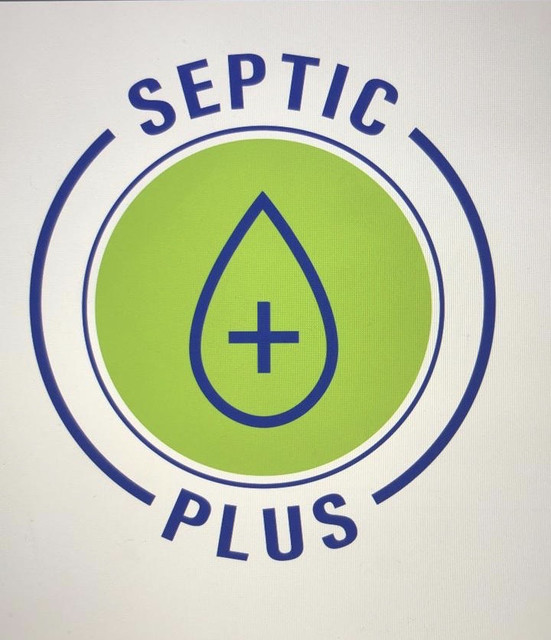
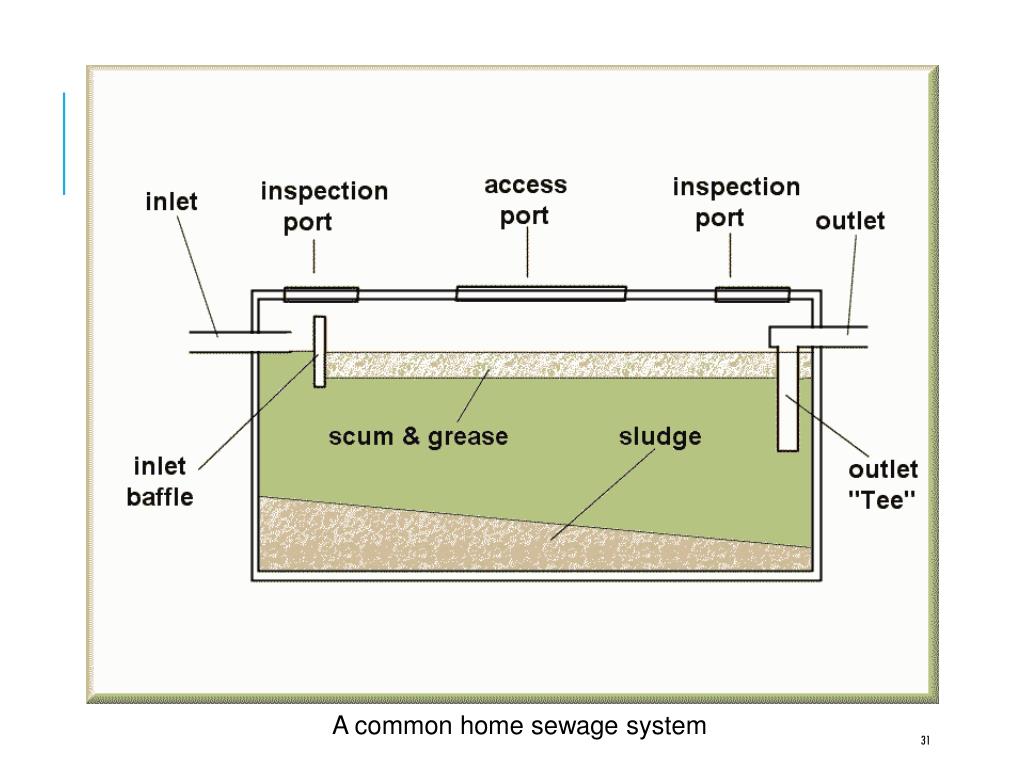
 Art. (strong
Art. (strong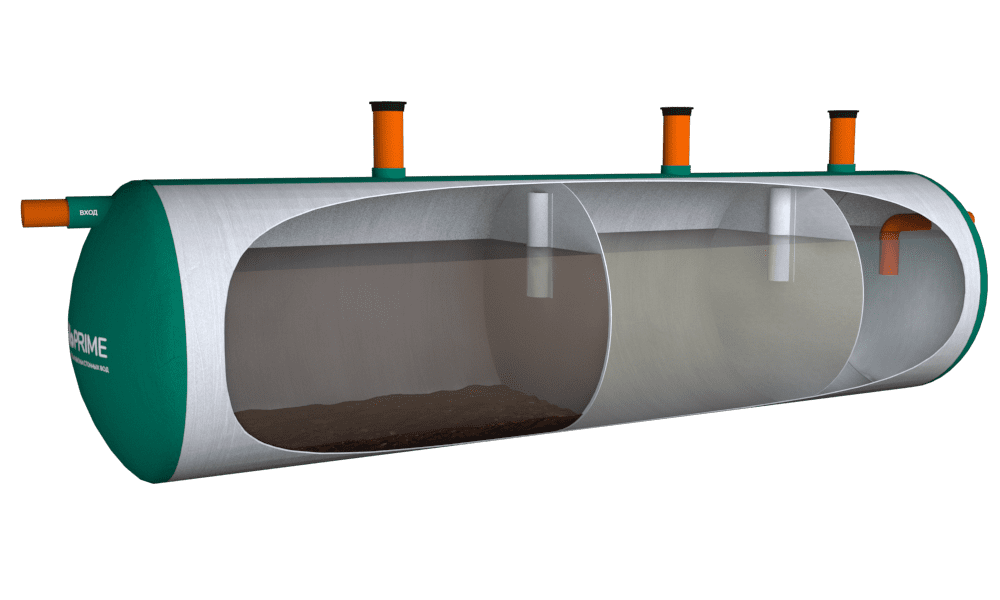

 (best practice recommendation – BPS).
(best practice recommendation – BPS). 





 03 U / min) (weak recommendation,
03 U / min) (weak recommendation,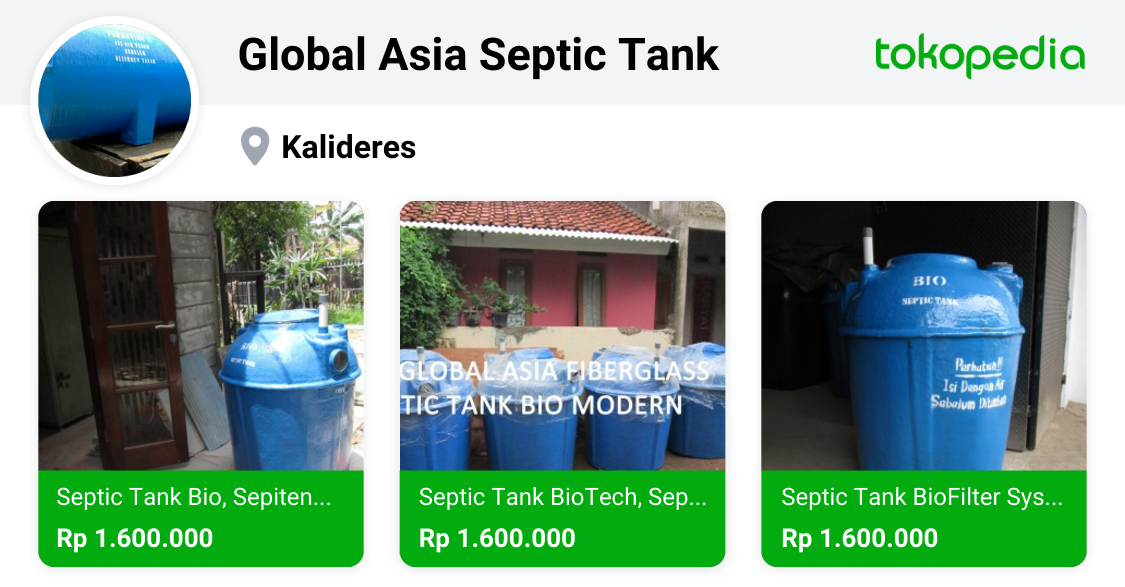




 (weak
(weak

 1 mmol / L (strong recommendation, high
1 mmol / L (strong recommendation, high
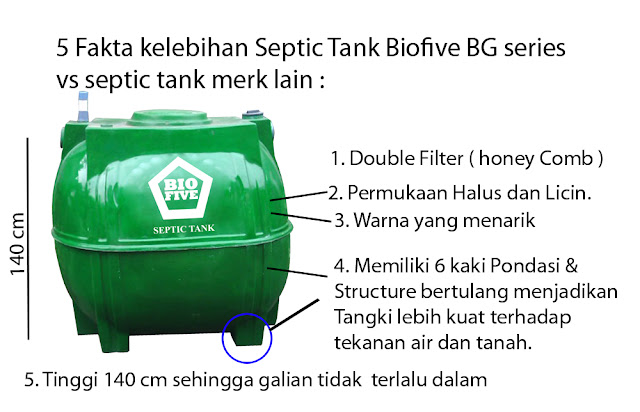





 lww.com/ccmjournal/Fulltext/2017/03000/Surviving_Sepsis_Campaign___International.15.aspx
lww.com/ccmjournal/Fulltext/2017/03000/Surviving_Sepsis_Campaign___International.15.aspx I. Kulakov “Ministry of Health of Russia, Moscow, Russia;
I. Kulakov “Ministry of Health of Russia, Moscow, Russia;